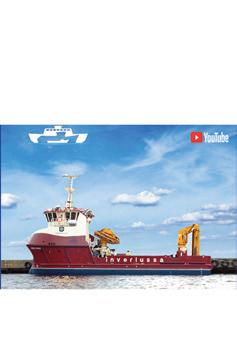




































The international fishing & aquaculture industry magazine
EDITORIAL & CONTENT
Editor: Jason Holland jholland@worldfishing.net
News Reporter: Rebecca Strong rstrong@mercatormedia.com
Regular Correspondents: Please contact our Correspondents at editor@worldfishing.net
Tim Oliver, Bonnie Waycott, Vladislav Vorotnikov
Quentin Bates, Terje Engø Eduardo Campos Lima, Eugene Gerden
Production
A
sustainable and efficient seafood industry is dependent on having all blue food producers be accountable for everything they produce
Full fish utilisation – a conversation that’s
With just a few months until the 5th Fish Waste for Profit conference gets underway in Reykjavik, Iceland, WF has grabbed an exclusive one-to-one interview with Dr Thor Sigfusson, Founder of Iceland Ocean Cluster Founder, event chair and champion of the 100% Fish movement.
Having recently informed our Special Report ‘By-Product Solutions: Cutting Waste and Maximising Value’ (January/February 2024) that approximately 10 million tonnes of by-products are wasted from targeted wild-capture fisheries alone, Sigfusson suggests in this issue that moving forward, a sustainable and efficient seafood industry is dependent on having all blue food producers be accountable for everything they produce.
He also insists that a wealth of benefits can stem from taking a holistic approach to full fish utilisation, including increased healthy nutrition, job creation, product innovation and value generation, and one of his overriding hopes is that companies and countries are sufficiently inspired to implement innovations that result in zerowaste across the seafood economy.
Since the publication of our By-Product Solutions Special Report, we’ve been informed of many more 100% fish-type initiatives, with ventures new and established finding innovative ways to use more of the raw materials available and to generate revenue from them.
In his interview, Sigfusson pointed to a growing list of start-ups that have successfully delivered new consumer products through the utilisation of fish by-products, and notes that there’s plenty more game-changing ideas likely to come to the fore. Like him, I’m looking forward to a very inspiring conference in September.
David Blake, Paul Dunnington production@mercatormedia.com
SALES & MARKETING t +44 1329 825335 f +44 1329 550192
Media Sales Manager: Hannah Bolland hbolland@worldfishing.net
Marketing marketing@mercatormedia.com
EXECUTIVE
Events Director:
Marianne Rasmussen-Coulling
Chief Executive: Andrew Webster awebster@mercatormedia.com
WF magazine is published bimonthly by Mercator Media Limited, Spinnaker House, Waterside Gardens, Fareham, Hampshire PO16 8SD UK t +44 1329 825335 f +44 1329 550192 info@mercatormedia.com www.mercatormedia.com
Subscriptions
Subscriptions@mercatormedia.com
Register and subscribe at www.worldfishing.net
1 year’s digital subscription with online access £218.00
For Memberships and Corporate/multi-user subscriptions: corporatesubs@mercatormedia.com
Launched in 1952, World Fishing & Aquaculture is published by Mercator Media, a B2B media and events company specialising in international maritime industries, including marine business and technology, ports and terminals, and environmental strategies.
Through its publication and free access website (www.worldfishing. net), World Fishing & Aquaculture provides expert-written, in-depth coverage of the fisheries, aquaculture and processing sectors, with a strong focus on the emerging solutions, technologies and innovations that are shaping the broader seafood economy’s landscape.


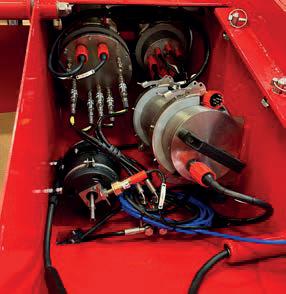
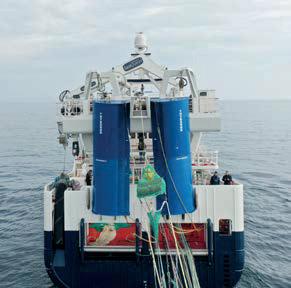







control SPREAD- control DEPTH - control RESISTANCE reduce CO2 EMISSIONS - reduce ENVIRONMENTAL IMPACT - reduce FUEL See video here: See brochure here:


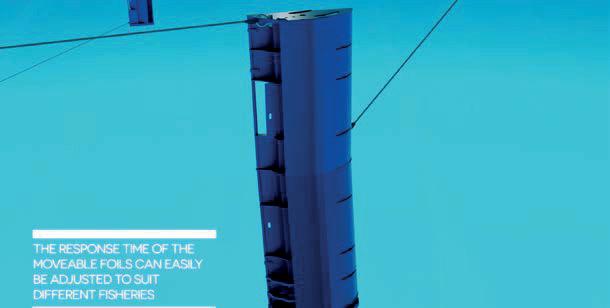
Invest in our controllable trawl doors for unmatched versatility, allowing you to tailor them to your vessels requirements and fishing patterns. Experience eco-friendly, cost-effective fishing with reduced co2 emissions and quick setup adjustments, ensuring better profitability while minimizing environmental impact.
PISTONS & FOILS:
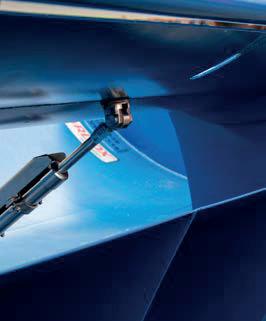
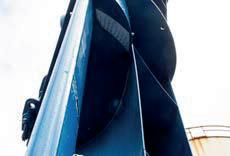

BATTERY & CHARGE STATION:
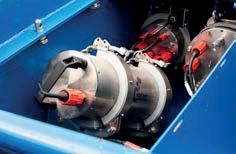


HYDROPHONES & INSTALLATION: SOFTWARE:

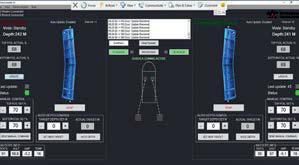
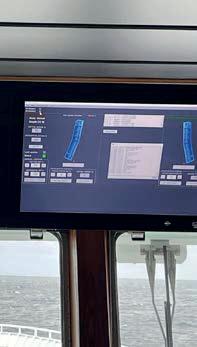


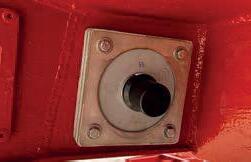

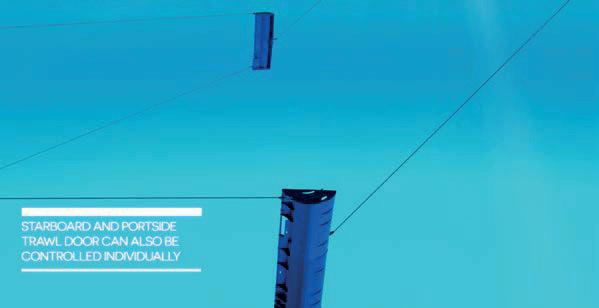

Thyborøn Skibssmedie A/S Sydhalevej 8, 7680 Thyborøn, Denmark
Tel. +45 97 83 19 22 sales@thyboron-trawldoor.dk www.thyboron-trawldoor.dk
The Our Ocean conference in Athens saw leaders unveil a series of commitments including establishing a marine protected area in Ghana by 2026 and an ambition by Guinea-Bissau to exceed the target of protecting 30% of the ocean by 2030.
Through the EU funded e-FishMed project, EFCA launched an exchange programme to enhance cooperation and to promote sharing of expertise and best practices in the fight against IUU fishing.
Therese Log Bergjord, CEO of aquaculture feed company Skretting is to leave the company after seven years. Bergjord will be succeeded on 1 June by Bastiaan van Tilburg, currently Managing Director for Trouw Nutrition Europe and Central Asia.
Norwegian football superstar Erling Braut Haaland has teamed up with Seafood from Norway in a 2.5-year collaboration. A separate deal has been struck with Norway’s national men’s and women’s teams.
Ministry of Oceans and Fisheries (MOF) has established the new “Plan for Further Enhancement for Working Conditions of Migrant Fishers on Distant Water Fishing Vessels”, which it developed in cooperation with NGOs Advocates for Public Interest Law (APIL) and Environmental Justice Foundation (EJF), and also the distant water fishing industry.
Announcing the plan, the government explained the characteristics of distant water fishing, with long-term fishing operations, make it difficult to conduct on-site inspections on working conditions and report human rights violations right away.
In December 2020, it prepared and implemented an improvement plan to strengthen the labour rights of migrant workers on distant water fishing vessels, which resulted in considerable improvements, including applying minimum wage standards and charging recruitment fees to vessel companies. However, civil society has continued to raise the need for further improvements in the working conditions of migrant fishers, criticising that human rights violations on distant water fishing vessel still remain.
In response, MOF, EJF, APIL and the distant water fishing industry have jointly established the new plan. This followed multiple meetings to update improvement of working conditions for migrant fishers of distant water fishing vessels.
Considering the characteristics of the distant water operation, the plan focuses on preventing possible human rights violations by imposing substantial sanctions on violators and strengthening victim protection. It also stops any deductions or the withholding of fishers’ wages under the pretext of savings or recruitment fees, MOL said.
Additionally, a comparative study on the wage standards and payment system between

Korea and other leading countries will be designed at the meeting of the Tripartite Council to promote upgraded conditions for the migrant fishers’ wages scheme including improved standards on wages and payment, and recognition of fishers’ career history and upgraded bonus. This meeting is scheduled for the second-half of 2024. There will also be an enforced port of call for tuna longliners during their sailing itinerary within one year of their initial departure for fishing operations.
With regards to periods of rest, employment contract provisions will include the entitlement for migrant fishers to have extra hours’ rest in return for their excessive work. Also, a survey will be conducted upon the crews’ disembarkation to establish whether they were rightly provided with their entitlements during their work and given a minimum of 10 rest hours per day (including six consecutive hours).
Substantial sanctions such as reduced quota will be imposed on violators.
Vessels suspicious of repeated violations of human rights protection will be blacklisted, resulting in random inspection conducted jointly by MOF and the NGOs. Also, consultations and cooperation with distant water industry
stakeholders will be sought for phased application of the C188, Work in Fishing Convention 2007 of the International Labour Organisation(ILO) to the related industry.
“This is an international best-practice and holds significant meaning as it is the first time that the government, NGOs, and the industry have jointly formulated a plan through communication. [The ministry] will closely monitor the implementation of the plan aimed at improving the working conditions of migrant fishers, and strengthening the protection of their rights, and will strive to ensure that all seafarers work in a safe environment without any discrimination,” Oceans and Fisheries Minister Kang DoHyung said.
“We view the government’s proactive engagement with stakeholders in formulating the plan as a positive trend, and we look forward to continued consultations to ensure active implementation of the Plan on the ground its tangible impact on enhancing human rights of migrant fishers.” said APIL CEO Jung Shinyoung and EJF CEO Steve Trent.
Both added that they anticipate continuous improvement on the matters that were not included in the plan this time around.
In the wake of new investigations uncovering forced labour in the seafood sector in India, China and North Korea, a leading industry group is urging supermarkets, restaurants, and other businesses to accelerate efforts to eradicate human and labour rights abuses from their supply chains.
To aid companies in initiating or expediting their efforts, the Conservation Alliance for Seafood Solutions has introduced a new set of guidelines, measures and resources to address the wellbeing of people and the planet.
The Guidance for Companies on Environmentally and Socially Responsible Seafood marks the first time that the 16-yearold alliance is calling on the industry to prioritise the “human factor” across its supply chains, including ensuring fair wages, safe and humane working conditions, and equitable opportunities for workers.
“The latest human and labour rights investigations confirm that the industry is facing a sea change,” said Ryan Bigelow, Project Director for the alliance. “While progress is being made, it’s clear that it’s time for the industry to meet this issue with the urgency it deserves. Prioritising human rights alongside conservation is not just the right thing to do; it’s the best thing companies can do to future-proof their businesses from consumer backlash and reputational damage.”
Bigelow insisted that companies of all sizes –from mass market retailers to
family-owned sushi restaurants – have the power to apply pressure on suppliers, spur reforms, and create new markets, models and supply chains that safeguard workers and the environment.
Founded in 2008, the alliance represents more than 150 seafood enterprises like Bumble Bee and Nestle Purina, NGOs, and environment and human rights experts across 30 countries. In North America, over 20 of the top 25 retailers, including Costco, Kroger, Target and Aldi have sustainable seafood partnerships with nonprofits within the alliance.
The alliance notes that as the world’s most widely traded food commodity, seafood involves complex supply chains – often passing through multiple intermediaries and countries before reaching the consumer – and as such, it’s especially vulnerable to exploitation since the majority of operations take place in remote, high-seas areas, far removed from regulatory oversight, or in

guidelines, measures and resources
countries like India and China where auditing firms have limited ability to effectively monitor supply chains.
It also highlighted that with forced labour generating an estimated US$ 236 billion in illegal profits annually – a sharp increase from $64 billion in 2014 – the European Union recently moved closer to joining the US in banning products made with forced labour.
The alliance’s guidance offers a toolkit and checklists for businesses that include a due diligence model companies can use to identify, assess and mitigate human rights and environmental risks in their operations and supply chains based on globally accepted frameworks. Additionally, it provides actionable resources for companies to inform their work and measure progress, including sustainable seafood

commitments made by dozens of companies like Aldi and Pepsico, along with 45 realworld examples demonstrating how businesses of various sizes and types across seafood supply chains, including retailers, restaurants, and fish co-ops, have successfully implemented steps to protect the ocean, people, and communities.
Bigelow said the guidance is critical to reaching the alliance’s 2030 goal whereby at least 75% of global seafood production should be environmentally responsible or make verifiable improvements, with safeguards in place to ensure social responsibility.
As of 2023, approximately 46% of the industry is progressing steadily. To achieve these goals, he stressed the importance of more companies beginning their efforts and those already committed embracing broader, more transparent processes.
The development of the guidance involved collaboration with a Working Group comprising leading industry experts, practitioners, and academics from organisations such as Fishwise, Seafood Watch and New England Seafoods.
whitefish
Denholm Seafoods, The Don Fishing Company and Seafood Ecosse have joined forces to establish Trinity Seafoods. The new business will focus on smaller-sized and underused sustainable stocks of whitefish such as haddock.
GSA names new CEO International, non-profit trade association Global Seafood Alliance has appointed Mike Kocsis as its new Chief Executive Officer. Long-time GSA leader Wally Stevens will assist in Kocsis’ transition into the role.
Products worth NOK 40.2 billion were exported by Norway in the first-quarter of this year, representing a fall of NOK 1.2 billion or 3%, compared with the corresponding period of 2023. This is the first value decrease in three years.
Strong progress has been made by tuna fisheries around the world to meet the Marine Stewardship Council Standard in the past 20 years, with 159 fisheries now engaged with the programme, or some 47% of the world’s wild tuna catch.
When it comes to seafood purchasing, consumers generally require some level of prompting to choose sustainable products and certification schemes can offer that motivation, according to new research from the Aquaculture Stewardship Council (ASC).
The farmed seafood certification programme has completed its most comprehensive consumer research to date, through an independent market research agency, interviewing more than 15,000 consumers in 14 countries about their perception and consumption of seafood.
Among its findings, of those consumers interviewed, 87% acknowledged that including fish and seafood in their daily shopping is quite important or very important, and that price is a top consideration for people when grocery shopping and notably when shopping for seafood.
Spain has the highest percentage of consumers who think including fish and seafood is important (92%) while the Netherlands and Japan have the lowest percentage, but still with strong agreement at 81%. More than half of Danish (52%) and US (51%) consumers think it is very important to include fish and seafood in their food shopping.
According to the survey, the main reasons consumers purchase seafood are because they enjoy eating it, and for its taste and health benefits. ASC said this indicates consumers are willing to prioritise food they enjoy in their budget, even when budgets are stretched.
With regards to sustainability, ASC learned that 83% of consumers are motivated to some degree to choose seafood with a sustainability label. Top considerations are that the product is safe and healthy for them and their families: free of antibiotics and chemicals (46%), comes from a healthy place with good water conditions (35%) and is safe to eat (30%). Social responsibility and worker

welfare are less important considerations.
Sustainability as a consideration when shopping for seafood is highest in northwest Europe, followed by south Europe and North America, with Asia lowest on the list. Italy has the highest percentage of consumers who choose sustainable products when there is a choice (82%) while Japan has the lowest (48%).
The survey shows that 67% of people are interested in buying more sustainable products, yet only 2% spontaneously think about sustainability when they are shopping for fish or seafood in the supermarket.
Clearly, consumers need a prompt in the supermarket to bring sustainability to the front of their minds,
ASC suggested, adding that certification scheme labels “can be the perfect prompt” in this situation. It advised that when asked about trustworthiness of sources of information, consumers trust independent certification schemes the most (21%) - more than environmental organisations, seafood brands, retail brands or other sources.
Additionally, its data showed that consumers associate certification logos with higher-quality fish/ seafood and safety, and that the highest awareness and importance of logos for consumers is in Germany and lowest in Japan
According to the research, ASC is the most recognised
farmed seafood label in all countries surveyed, scoring higher than other responsible farmed seafood programme labels. Awareness of the ASC label is highest in Germany and the Netherlands, followed by Sweden, the US and Canada, and is lowest in Japan. It also ascertained that ASC is the most trusted label for farmed seafood, with trust ratings ranging from around 70% in Spain and Italy to around 60% in most other countries.
ASC Senior Director –Markets and Communications Willem de Bruijn said the results from the survey revealed some interesting insights into how consumers shop for seafood and what informs their buying choices.
“The good news for the industry is that there is still strong demand for seafood because people enjoy eating it for its taste and health benefits and are willing to pay for it,” he said. “One of the most striking findings is that although twothirds of people say they are interested in buying more sustainable products, only 2% spontaneously think about sustainability when they are shopping for fish or seafood in the supermarket. This clearly demonstrates that consumers want to buy sustainable and responsible fish and seafood, but need an easy visual prompt in store, such as a certification label on pack, to remind and support them to consciously act on this desire.”



Longer ow route over the rope
Longer ow route over the rope
More speed = lower pressure
More speed = lower pressure



Shorter ow route under the rope
Less speed = more pressure

Quality is close to the heart of John Angus, Senior Sales Manager at Pelagia Shetland Ltd, and this dedication by him and the rest of the team to ensure best practice procedures in handling pelagic fish has resulted in discerning Japanese buyers now procuring mackerel on a regular basis from the processing facility
Combined mackerel exports from all Scottish processors to Japan have more than doubled in both volume and value between 2021 and 2022, underlining that this is a market with considerable potential for expansion.
Pelagia Shetland is playing its part in this growth and with landings of mackerel and herring into the processing facility set to increase over the coming years, the company will be looking to further develop the Japanese and other key markets.
“Maintaining the highest quality standards is key for us as we move forward, which is why we have invested in modern processing machinery and are embarking on constructing a major new coldstore facility, which will double our capacity,” Angus said.
Recent work by Lerwick Port Authority has reclaimed approximately 4,000 square metres of new industrial land at Arlanda East, adjacent to Pelagia Shetland’s factory, where the new coldstore will be built, with construction due to start later this year.
Maintaining the highest quality standards is key for us as we move forward
John Angus, Pelagia Shetland
The land reclamation part of the project received GBP 450,759 in grant from the UK Department for Environment Food & Rural Affairs (Defra) under round two of its UK Seafood Fund Infrastructure Scheme, with funding of over GBP 150,250 from the Port Authority.
“The great advantage here in Shetland is that we lie adjacent to some of the best mackerel and herring fishing grounds in the world, which means that boats only have to sail a short distance to land their catches,” Angus said. “This obviously makes economic sense for them, and from our perspective, it means that we are taking in the freshest and highest quality mackerel and herring. An added benefit is that because Lerwick is the closest fishing port to these rich grounds, there are less carbon emissions from the vessels landing to us.”
Paul Ratter, Quality Control Manager, oversees the quality and hygiene operation at the facility. Fish enter the factory from an adjacent landing quay at about -1.5°C, and great care is taken to move the fish quickly through the process to freeze as quickly as possible.
Quality and weight checks are continuously taken throughout the production to achieve a consistent product with as little variation as possible. Full traceability is demonstrated right back to where the fish were caught for each product. The fish are frozen whole and packed into 20kg cartons.
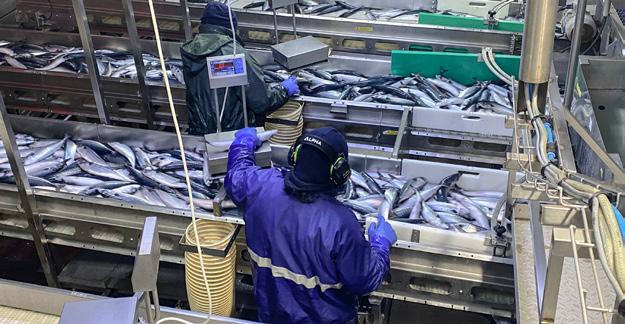
“It is an operation we take great pride in, and we have a fantastic team of people working here,” Ratter said.
As well as Japan, key markets for mackerel include other parts of the Far East and in eastern Europe, including Ukraine, Romania, and Bulgaria. The UK market is also important where most of the fish goes onward for secondary processing, including smoking and canning. To transport the frozen fish to export markets, reefer vessels berth at the quayside by the factory, for onward carriage to other distribution cold storage hubs in places such as Lithuania and the Netherlands.
Processing peaks
The main periods for handling mackerel catches from Scottish vessels are in the early part of the year in January and February, and then from the middle of October to the middle of November.
If a fishing access agreement is reached with Norway for UK waters, as happened last year, Norwegian boats land into the facility from the middle of September to early October.
For herring, the main landing period is August, and with there being a significant increase in the MSC-certified

North Sea herring quota for 2024, the coming season promises to be a busy one.
Most of the herring is filleted and mainly destined for markets in Germany and Poland. Herring roe is also produced, which is in strong demand in Japan, with the company having invested in specialised roe extraction equipment.
Pelagia Shetland employs around 35 people on a permanent basis, with the workforce doubling during peak landing periods. Traditionally, much of the extra labour required had been sourced from EU eastern European countries, but with the current challenges in accessing EU labour following Brexit, other avenues are being explored, including the successful hiring of peak period employees from Ghana and the Philippines.
The processing operation has come a long way since it was first founded as Shetland Catch in 1989 as a joint venture between the Lerwick Harbour Trust (now Lerwick Port Authority), the Shetland Fish Producers Organisation and Jaytee Seafoods. Over the period, increased automation has enhanced efficiency, and changes in the business structure led to Norwegian company Austevoll Seafoods becoming a shareholder. A series of company mergers in Norway in the years thereafter led to the formation of Pelagia, which has held a majority shareholding in Pelagia Shetland since 2016.
Green approach
The overall operation is complemented by the

nearby Pelagia Bressay factory, which processes the trimmings from processed mackerel and herring into high-grade fishmeal and oil. This ensures a highly efficient integrated operation, where all parts of the fish are utilised, ensuring environmentally responsible production.
According to Angus, sustainability and environmental protection are a key part of the ethos of Pelagia Shetland, which is why the investment of modern processing machinery and cold storage facilities is essential to ensure the lowest possible carbon footprint. Research has shown that Scottish caught mackerel is one of the lowest carbon footprint protein products around.
Ahead of the 5th Fish Waste for Profit conference in September, Iceland Ocean Cluster Founder Dr Thor Sigfusson tells WF that the 100% Fish movement is expanding its reach at great speed thanks to increased industry support and engagement, not least from the start-up community
WF: If you could sum up the 100% Fish initiative in a few sentences, what is it and why is it important?
Sigfusson: As I embarked on my journey with Icelandic fisheries, I encountered fishermen reminiscent of the trailblazers highlighted in “Good to Great” business literature – constantly striving to improve, particularly in maximising value from their side streams. Despite their 100% utilisation achievements, they remained humble. Their ethos inspired me to emulate their mindset and practices, especially given the stark contrast with the majority of fisheries globally, which waste between 30% to 60% of their harvest. This inefficiency not only squanders valuable resources but also contributes significantly to environmental degradation.
When meeting pioneers in seafood from different continents, you realise there are so many people in this industry who have the ambition to create value and jobs ‘‘
Motivated by the desire to instigate change, I envisioned a movement that would challenge the status quo: 100% Fish. This initiative encapsulates the ethical and environmental imperative of utilising every aspect of seafood production, whether from farmed or wild sources. By adopting a holistic approach to utilisation, we can unlock a wealth of benefits, including increased nutrition, job creation, product innovation, and value generation. Moreover, embracing the 100% Fish ethos aligns with Sustainable Development Goal 12, aiming to halve food waste by 2030. In essence, 100% Fish represents a compelling vision for a more sustainable and efficient seafood industry, one that resonates with both moral and practical considerations.
WF: What are the main short- and longer-term ambitions for 100% Fish?
Sigfusson: The ambition – or arguably the need – is to have all blue food producers accounting for 100% of everything they produce; wild-capture, farmed, shellfish, crustaceans, molluscs, everything. Shifting to 100% accountability is a useful step in the process toward the viability of 100% utilisation. Understanding operational changes, finding markets, supporting investment and entrepreneurs, creating new
products, all takes time and vision so, in the shorter term all systems moving to 100% accountability is an ambition, longer term: 100% utilisation. Producers will benefit from market support in this shift.
Our sense is that it will become a part of best-practice in time; for example, in MSC or in quota allocation, or in aquaculture licencing, BAP and ASC, which would accelerate progress. Our short-term plan also includes winning an Earthshot Prize for all those currently committed to 100% Fish around the world. The movement has been nominated, which is terrific.
WF: You have written a new book, also called ‘100% Fish’ – an extensive undertaking, with fantastic insights from the world of fish by-product utilisation. Is the hope that it inspires and accelerates further change in this space?
Sigfusson: My hope is that we can inspire and support countries and companies around the world in implementing their own 100% fish activities and fuelling the global entrepreneurial environment to see the establishment of exciting and creative seafood innovations that mean zerowaste for the world’s seafood. Tied in with improved global management and accountability of catch and oceans that have the health and resilience to sustain our future.

n Dr Thor Sigfusson, Founder of the Iceland Ocean Cluster and Chair of the 5th Fish Waste for Profit conference
WF: Researching and putting the book together, what initiatives and visions inspired you?
Sigfusson: When meeting pioneers in seafood from different continents, you realise there are so many people in this industry who have the ambition to create value and jobs. They are tackling different challenges, but their aim is to constantly to do better for their company, community and the environment.
WF: Iceland has been leading the way on this, particularly with innovation and entrepreneurship related to the utilisation of its whitefish. Can you outline some of the latest initiatives taking place in the country?
Sigfusson: In recent years, the fishing industry has seen unprecedented investment in innovative ventures, marking a significant shift. I see this surge in investment as unparalleled globally. I started the Ocean Cluster House with a support from the Port Authorities in Reykjavik and backing of seafood companies like Brim. Now, new spaces are being created in other parts of the country; Breið in west Iceland backed by Brim Seafood and Drift in north Iceland backed by Samherji. These activities exemplify the direct engagement of fishing corporations in the innovation sector. Such active involvement by influential companies is poised to become a pivotal force in reshaping innovation and the fishing industry in the foreseeable future. We need to inspire other large seafood companies to do the same in other parts of the world!
Fish Waste for Profit has been one of the cornerstones of 100% Fish and opened a great opportunity for 100% fish enthusiasts to meet and share ideas
WF: The innovation hasn’t stopped there. We’re also seeing several initiatives utilising fish by-products popping up around the world, which ones in particular have caught your eye?
Sigfusson: Multiple start-ups have been established with various products in the field of beauty and health, nutraceuticals (supplements), medicine, leather, omega-3, and enzymes to name few. Here we can name Kerecis, Nordlaks, Zymetech, Nordic Fish Leather, Marine Collagen and Ballstad to name just few. I am also a dedicated follower of some start-ups utilising crustacean shells, for instance Genis in Iceland and Marin skincare in the US. Our collaborations in 100% fish with the Great Lakes in the US, Namibia, the Pacific Islands and Korea to name few, have been very promising. For me, it is crucial to build the community of collaboration first and that has been very fruitful so far.
WF: Have you identified any new opportunities for utilising by-product materials that are ripe for progress?
Sigfusson: Icelandic R&D is observing both the eye liquid from the cod and perch, blood from whitefish and salmon. The Icelandic HPP Protein plant Ltd is also working on making fishmeal into pure protein. Every day is an innovation day here at the Iceland Ocean Cluster! Our latest start-up tenant in the Ocean Cluster House is Sea Growth. Their aim is to produce raw fish products from fish cells, so-called “ecological fish”.

WF: We’re seeing more and more interest in this space, but it’s likely there are many people and organisations that are not sure where to start. What advice would you give them?
Sigfusson: I believe we need to bring the start-up world into the picture; something that’s totally lacking in many countries. The bottom-up approach has been very lucrative in Iceland. The fishermen are contacted by start-ups and innovators and assist them by providing them with by-products and other support. Sometimes I feel that fishermen are sceptical that we all believe they can become pharmacists – developing high end pharmaceutical products from their products. We need rather to take it step by step; walk slowly up the value line, beginning with ideas regarding simple fishmeal production from side streams, then maybe up to some nutraceuticals etc.
WF: What can be done at industry, policy/regulatory, investor and research levels to ensure the 100% Fish message spreads fast and far enough?
Sigfusson: We have had difficulties in getting European regulators to accept some of our by-products for human consumption. We need to move some of the hurdles that are in the way of full utilisation. Sometimes, people are suggesting government should step in, full force and ban wasting of by-products. I believe we should allow the industry to develop further a 100% mindset rather than relying on government. Governments should support R&D and start-up accelerators.
WF: Where do consumers fit into this picture?
Sigfusson: Peter Handy, owner of Bristol Seafood in Maine, USA, says in my book: “One of the things I hear the seafood industry loves to say, and it’s always rubbed me the wrong way, is that we must educate the consumer. To me, that’s always just sounded arrogant. And I think what we should try to do is to be educated by the consumer. Rather than to tell them why they should eat what we make, why don’t we figure out why they’re not eating it.” I think this sums well up how we need to connect with consumers differently than we have so far.
WF: Last but not least, the 5th Fish Waste for Profit conference is taking place in Iceland this September as part of the IceFish 2024 programme. What are you most looking forward to about this year’s conference?
Sigfusson: Fish Waste for Profit has been one of the cornerstones of 100% Fish and opened a great opportunity for 100% fish enthusiasts to meet and share ideas. We are already receiving very interesting ideas and suggestions for topics that I believe will make the next conference a very dynamic event.
Spatial planning is key to establishing shellfish and seaweed farms in ports and benefitting local communities and environments, says a new study. Bonnie Waycott reports
Over the years, there has been much focus on the coexistence of offshore renewable energy and aquaculture, two rapidly growing industries that share a common resource: the ocean. Bringing these two industries together has the potential to generate economic, environmental, and social benefits, while addressing multiple challenges from food scarcity to climate change.
The same could be said for aquaculture and maritime ports. As ocean-based industries continue to expand, careful spatial planning is important to reconcile existing ocean uses and manage environmental impacts effectively. In January 2024, a team of marine spatial planning researchers from the NOAA National Centers for Coastal Ocean Science (NCCOS) and the Port of San Diego released a study on spatial planning methods for aquaculture siting.
The goal is to ask whether aquaculture can be accommodated within and around San Diego Bay, a highly trafficked maritime port, and determine the most suitable species and farming practices for the area.
“NOAA has been building programmes on spatial planning, siting and environmental modelling for aquaculture for the past 10 years,” Dr Ken Riley, science branch chief at the NOAA Fisheries Office of Aquaculture, told WF. “The first place to start with aquaculture development is real estate; how do you find the right location? Where is the best location a farm could be built, and the environment could sustain it?”
‘‘
We are in the midst of a major local food movement in San Diego and southern California and want to be better connected to our foodKen Riley, NOAA Fisheries
Riley continued: “We are in the midst of a major local food movement in San Diego and southern California and want to be better connected to our food. The ocean is the next opportunity to farm and produce food for southern California, and the state is already well known for its agriculture. It’s extremely exciting to see how much farming seafood in coastal areas will mean for California’s agriculture.”
Establishing partnerships
Using exclusion analyses and a multi-criteria decision analysis approach, Riley and his team identified specific areas suitable for shellfish and seaweed aquaculture, considering environmental conditions and compatibility constraints. One unique feature of the Port of San Diego, Riley said, lies in areas that could potentially support shellfish and seaweed farming. While working to identify opportunities to grow mussels or kelp in those areas, Riley and his team also focused on 16 to 17 local species

of shellfish and seaweed that grow well and are readily adapted to the environment surrounding the port.
“Starting with almost 50,000 acres, we first identified over 9,000 acres that offer promise for aquaculture development,” said Riley. “Our recommendation is that the port partner with local universities and the aquaculture sector to develop, observe and conduct pilot projects to validate the projected growth and performance of different species. Our aim was to identify areas that the port could use and help it decide where pilot activities could occur. Restoration is also a focal area. Abalone species, for example, are declining significantly and may benefit from restoration programmes.”
Having identified exclusion zones such as major shipping and navigation routes, mooring fields, areas for sailing, naval and maritime activities, potential sources of pollution and areas that would require major efforts to get aquaculture approved, a culture systems analysis was carried out. This involved investigating different species and culture system combinations to identify where different systems had potential for success and to gain a detailed understanding of the necessary environmental parameters with regards to culture, equipment and species combinations.
“This is the next step in spatial planning, because an exclusion analysis only reveals the areas where aquaculture could potentially succeed,” said Riley. “The greatest opportunities in and around the Port of San Diego are the farming of oysters and small-scale seaweed farming. Conversations began six to eight years ago at the port on developing the blue economy, with aquaculture and restoration a big part. We now have a follow-on study that looks at the ecosystem services and habitat considerations for aquaculture and restoration projects and how they could go ahead in certain areas, including a former site for marine debris that was restored through NOAA funding.”
are

As aquaculture continues to grow along the US Pacific coastline, the work by Riley and his team offers insights that extend beyond conflict avoidance. By identifying areas with potential for successful aquaculture development, the research supports the growth of sustainable aquaculture and other blue economy industries in and around the Port of San Diego, highlights how ecosystem services from shellfish and seaweed farming can benefit the area and sheds light on bigger issues such as climate change, rising sea levels and what these might mean.
Efforts are also being made to engage with public perceptions and misperceptions of aquaculture and better understand these by working with communities to grow the social acceptance of aquaculture. With plenty of national attention on work by San Diego to achieve its blue economy objectives, feedback has been positive, said Riley, who highlighted that his work is a positive example of marine spatial planning that can be replicated in other ports around the US.
While the study showcases how marine spatial planning can be a powerful tool for decision-making in the development of industries like aquaculture, Riley acknowledged that there are several steps to take to enable shellfish and seaweed farms to operate with minimal disruption in areas like ports.
“NOAA is conducting a number of studies in smart engineering, smart design and smart siting,” he said. “It’s also looking at rising sea levels and increased energy in particular environments, what this might mean and how to make sure that shellfish and seaweed farms are secure, for example anchoring and mooring for stable production systems and minimising biofouling to produce healthy shellfish.
“There are also permitting and regulatory considerations to go through, as well as environmental impact statements. Before establishing shellfish and seaweed farms in its jurisdictional waters, the port will have to work with the state of California and think about comprehensive environmental assessments.”
Riley and his team have demonstrated that even a busy port like the Port of San Diego can accommodate aquaculture, underlying the important role of spatial planning approaches
in economic development and environmental sustainability.
The port is now partnering with seaweed farm Sunken Seaweed, San Diego State University and Hubbs SeaWorld Research Institute to explore seaweed production in the port and the waters off California.
A pilot project is underway to better understand engineering, farming and harvesting, and the necessary economic business model for seaweed farming.
Land-based infrastructure at the port such as processing facilities, cold storage and shipping and transport logistics are also key parts of the work, along with workforce requirements and education and training to build that workforce.
“There is a realisation that there’s a gap in southern California, in which the area is not producing as much as other waters around the US,” said Riley. “We’ve worked for over a decade with the port of Ventura, a little further north of San Diego, with Los Angeles and the port of New Bedford, the largest commercial fishing port in the US. There is a lot of conversation with other ports, but our San Diego study was the first. It’s the seed that spawned the conversation, and we’re excited to see how things develop.”
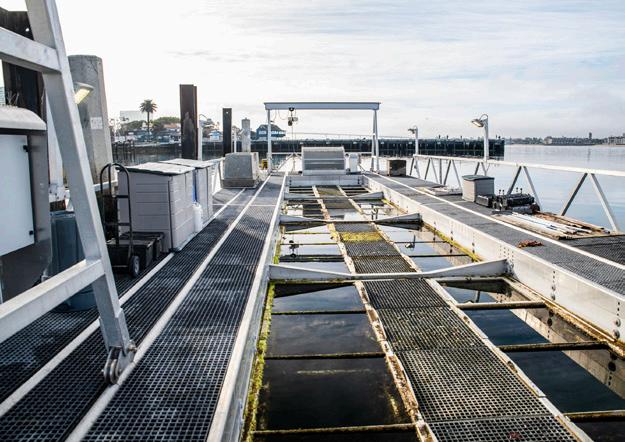

Markus Lifenet ehf
Specialized in development and manufacturing of man overboard recovery systems. Most known for the Markusnet type MS and the variety of Markus Scramble-nets type SCN, Markus Emergency ladders type MEL2/SCN2 and Throw-line type RLC. www.Markusnet.com


MOB Boat Rescue-net
Light, quick fastening, takes little space, provides easy and fast method to place the casualty in the net, is soft but firm around the casualty, provides easy lift by one or two persons and is easy to repack after use
For upto 1,8 metre freeboard. Provides safe passage back on board at the side of the boat, can be pulled down from the water and it is made to go 1 metre into the water in lowered position.

Markusnet
For commercial and leisure. Lloyd´s Register EMEA type certified for ISO19898/2019

For all types of ships and boats. Ideal to carry on hikes near water.

Factory trawler Berlin NC-107 has joined the DFFU fleet, delivered by Norwegian shipbuilder Vard. The triple-rig trawler has capacity for processing both whitefish and shrimp onboard

Cuxhaven company Deutsche Fishfang Union opted for the Vard 8 03 design, developed by Vard’s Ålesund design team, and this is the latest in a series of trawlers delivered by the yard to operators in Norway and the Faroes Islands. The 84.4-metre newbuild has a beam of 16.7 metres and the hull was built at Vard’s Braila yard in Romania, and brought via a roundabout route – due to the uncertain situation in the Black Sea – to Brattvaag in Norway for outfitting.
“The delivery of Berlin NC 107 is pivotal for DFFU, and Vard has done an excellent job. Over the years, Vard has built several technologically advanced vessels, consistently meeting the highest standard with their craftsmanship and innovation,” stated DFFU Managing Directors Baldvin Thorsteinsson and Samuel Rodriguez.
“Berlin is equipped with advanced technical solutions from trusted partners. One significant change with this new vessel is its shrimp-catching and processing capabilities, enlarging the portfolio of products produced onboard. The production of whitefish has also been upgraded with new equipment, which increases options in production and expands our product range. The technology and equipment onboard will enable us to bring 100% of the catch to shore. This supports our goal of increased value creation at sea and directly aligns with our sustainability efforts.”
The heart of a fishing vessel of this kind is the processing deck, and Berlin has a factory deck outfitted by Optimar for a variety of production modes and to make full use of everything that comes on board as efficiently as possible.
The primary focus is on cod, haddock and saithe fillet production, with catches passing through the pair of Vélfag 500 heading machines to the Vélfag 525 and Breivik 290 filleting machines. The Marel waterjet portioning machine removes bones from fillets and is able to produce portions, loins, and tails to specifications as the market requires.
Packed fillets go to the bank of three automatic Optimar freezers, and frozen production passes to a freezing hotel where a robot collects cartons onto appropriate pallets before an elevator takes them to the refrigerated fishroom.
Production is designed with a high level of automation, with no human interaction needed for handling production once it leaves the freezers. The focus on automation throughout the production process minimises physically demanding tasks and the risk of accidents.
Alongside fillet production, a Sepamatic 6000 system processes heads and offal into mince for feed production and also processes backbones and offcuts into human consumption-grade mince. Ensilage tanks on board hold any remaining production waste so that nothing goes
n DFFU’s new factory trawler is skippered by Sigurdur Óli Kristjánsson and Teitur Björgvinsson
over the side with the exception of some bone material. Fish skins are graded out and frozen separately as these are used tp produce collagen for food supplements and cosmetics.
Also on Berlin’s factory deck is a full shrimp production line with a Style grader and two Connie cookers from Carsoe. Processed shrimp are passed through the individual quick freezing tunnels to produce a consumerready product.
Berlin’s deck is laid out with electric deck machinery from Seaonics, including four main trawl winches. This provides opportunities for triple-rig trawling, primarily when fishing for shrimp. Seaonics also delivered the eight sweepline winches at the head of the full-length trawl deck, a net drum mounted over the deck, three gilsons, an netsounder winch and smaller winches.
Cranes are a 3.75-tonne unit on the foredeck, and a pair of 8-tonne/7.5-metre deck cranes aft that have a working radius of 16 metres with a safe working load of 3.75 tonnes.
‘‘The delivery of Berlin NC 107 is
The main engine is a 5400kW Bergen B33:45L9, powering a 4-metre diameter controllable pitch propeller. The energy installation on board Berlin includes a 2500kW shaft generator, a 1785kW Caterpillar 3512 generator and a 640kW Scania CV DI16M 90M emergency generator. This is complemented by a 316kWh energy storage system that holds excess power generated by the permanent magnet motors on the trawl winches when shooting away the trawl gear. Energy from the batteries is released automatically to the vessel’s power network when required, such as when experiencing sudden load changes.
The main engine has modes that allow for optimised fuel consumption according to the required load at any given time. This is achieved by alternating RPM and VVT (variable valve timing) to achieve maximum fuel efficiency. While not a new concept, this represents a significant advance over past engine designs. In the past, larger engines meant higher minimum fuel consumption at the lowest load, and maximum fuel efficiency was fixed within a specific load range. This limitation meant the vessel was not operating within the optimal range at other load levels, posing a challenge for vessel operators who needed an engine robust enough for fishing operations yet efficient enough to minimise fuel consumption during transit.
For companies operating vessels that travel long distances between port and fishing grounds, achieving optimal fuel efficiency during these transfers and during fishing is crucial.
“There is growing pressure on the fishing industry to adopt environmentally friendly practices,” a DFFU representative commented. “This pressure stems not only from regulatory authorities and public opinion but also from our own commitment to sustainability. We strive to go beyond the basic requirements by implementing practical solutions across our fleet whenever possible and maintaining high maintenance standards. We also focus on educating our crew and fostering a company culture prioritising energy saving.”
In addition to a high-quality working environment and greater automation on board, with attention paid to ensuring healthy acoustics on the factory deck, Berlin has excellent crew accommodation, designed to maximise daylight levels.



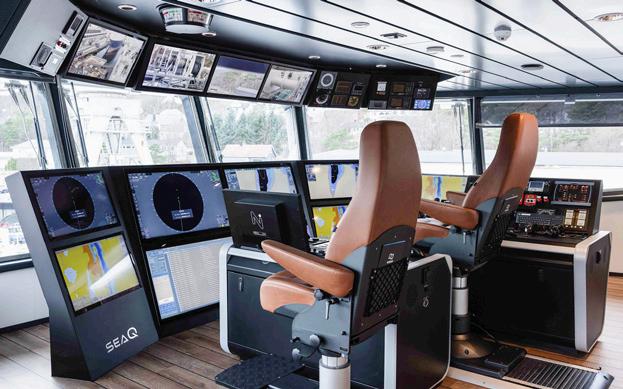
The latest in a series of factory trawlers for the Russian Fishery Company has been delivered by Admiralty Shipyards in St Petersburg
The 108-metre LOA, 21-metre breadth Kapitan Martynov is the fourth in the Russian-built series of ST-192 factory trawlers designed to fish for Alaska pollock and herring in the Bering Sea and Sea of Okhotsk.
These trawlers are designed for a catch rate of around 60,000 tonnes annually, and the overall planning is to replace the company’s fleet of ageing Soviet-era tonnage with a smaller number of more efficient vessels with more economic running costs and lower emissions.
The factory deck onboard Kapitan Martynov has capacity to produce fillets, mince, surimi, fish oil and fishmeal, as well as having a canning plant for roe and other products. The freezing capacity for fillets is around 80 tonnes per day and there is also an 80-tonne/day surimi plant. The meal plant is capable of producing approximately 40 tonnes per day. The refrigerated fishroom space measures 5,620 cubic metres.
Kapitan Martynov follows new trawlers Kapitan Vdovichenko, Mekhanik Maslak and Mekhanik Sizov, all

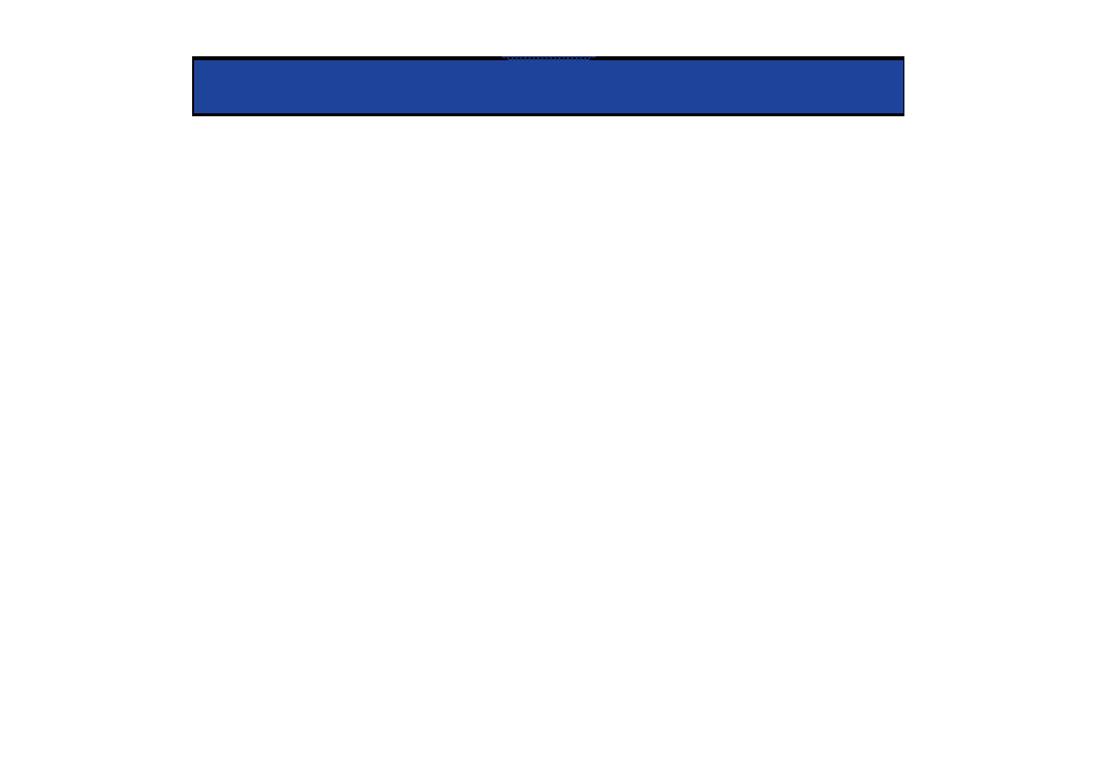
Icelandic fishing, processing and aquaculture company Hraðfrystihúsið-Gunnvör has placed an order for a new factory freezer trawler to be built at Astilleros Ria de Vigo, the former Barreras shipyard which has been acquired by Astilleros Armón, enabling the yard to expand its activities in Vigo.
The delivery of the new vessel is scheduled for the second half of 2026, and it will replace the company’s current factory vessel, the 57-metre Júlíus Geirmundsson ÍS-270 which was built in Poland in 1989.
Hraðfrystihúsið-Gunnvör went back to Skipasýn for the design of the new factory trawler, as its Skipasýn-designed fresher trawler Páll Pálsson has performed extremely well since it was delivered to the company six years ago.
The new factory trawler will have dimensions of 67.1 metres overall with a 16-metre beam, and the same principles as went into Páll Pálsson’s design are applied to the newbuild, with a 3,600kW MAN main engine driving a slow-running, large-diameter propeller of not less than 5,000mm, to deliver a bollard pull of 76 tonnes. This is a combination that delivers economic performance, and energy economy is a key aspect of the overall design – as is crew comfort.
The working environment is also designed to ensure the best possible working conditions with minimal heavy lifting. The processing deck is to be outfitted with catches routed via the heading machines to RSW-cooled pounds before passing to the filleters or to vertical plate freezers. Filleted fish go to trimming stations before being packed

and frozen in an automated freezers system.
Frozen production is channelled to boxing and from there to a computer-controlled freezer hotel for automatic palletisation, wrapping and transfer via an elevator to the refrigerated fishroom. Technology to produce fish oil and side-stream products is part of the design.
Hraðfrystihúsið-Gunnvör operates two trawlers, shorebased production and a canning plant.
n New Júlíus Geirmundsson is a Skipasýn design. It features a slowrunning, largediameter propeller
Assurance and risk management
provider DNV and Ocean Sovereign have obtained French registration for the deployment of fish farming vessel Ocean Ark
Ocean Ark, a patented, advanced self-cleaning trimaran superstructure, was developed by Ocean Sovereign according to Marpol, Solas and IMO regulations. The vessel is designed with low density to operate in high offshore waters, drifting with the natural current and natural fish shoals. It is designed to ensure sufficient safety for the environment, fish and crew.
According to Ocean Sovereign, Ocean Ark’s mobility will help to ensure the health and welfare of the fish and ensure the fish are kept in their natural habitat.
DNV will support Ocean Sovereign with businesscritical challenges and innovations, designed to prevent fish escape and reduce risk of technical failure in operation. To achieve this, it will set up a regulatory framework to fulfil local requirements in alignment with the rules and standards of French authorities.
The project team advise that deploying Ocean Ark away from marine heatwaves, algae blooms and storms – “aquaculture’s three Achilles’ heels” – will increase fish welfare, produce higher quality protein, and increase world fish production without increasing pressures on fish stocks and coastal habitats.
“Offshore fish production is based on a combination

of two well-known concepts, fish farming and offshore technology, and therefore a cross-industry approach and know-how is needed,” Ocean Sovereign General Manager Zeyd Fassi Fehri said.
In addition to its high-quality standards and being Europe’s largest market for salmon, France also has one of the world’s largest maritime exclusive economic zones across the ocean.

Innovation | Industry insight | Knowledge sharing

visit: www.worldfishing.net/FWPCONFERENCE
contact: +44 1329 825335
email: info@icefishconference.com



DAY ONE – Thursday 19th September 2024
08:45 Coffee & Registration
09:15 Chairman’s Welcome
Thor Sigfusson, Founder and Chairman, Iceland Ocean Cluster
09:30 Gold Sponsor Welcome:
09:40 Keynote Address: Impactful partnerships for full utilization
The power of partnerships – how teaming up and collaborative relationships can accelerate full utilisation; what are the current available support systems for startups. Global collaborations that are making 100% fish impactful.
Alexandra Leeper PhD, Managing Director - International, Iceland Ocean Cluster
David Naftzger, Executive Director, Great Lakes St. Lawrence Governors & Premiers Namibian Ocean Cluster
10:20 Q&A
10:40 Coffee & Networking
Growing emerging opportunities linked closely to partnerships in the circular economy and opportunities that connect land and sea and cross sector - pharmaceuticals, nutraceuticals, feed, pet foods, biofuels, and fertilizers etc. Nutritional value of these new products where relevant for consumption/feeds.
11:10 Jónas Rúnar Viðarsson, Director of Business and Development, Matis
11:30 Rune Frostad, CEO, Pretio
12:10 Q&A
12:30 Lunch & Networking
SESSION 2: GOING FROM GREAT RESEARCH TO A PRODUCT ON THE MARKET Fireside chat, Mini-discussion session
Moderator: David Naftzger, Executive Director, Great Lakes St. Lawrence Governors & Premiers
14:00 Regal Springs*
14:20 Kerecis*
14:40 Runar G. Solstad, Senior Scientist Marine Biotechnology, Nofima
15:00 Q&A
15:20 Coffee and Networking

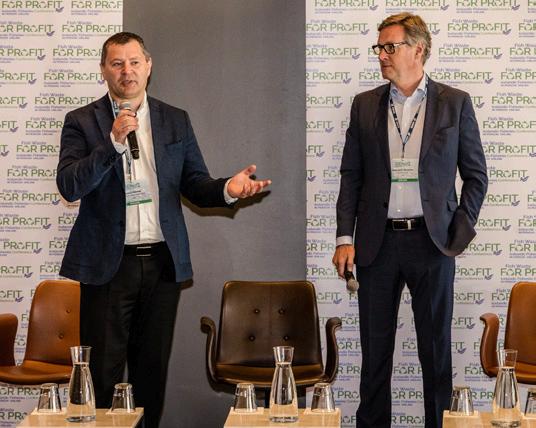
AI, digital technology, and applications in commercial fishing/aquaculture by-product production, trends in market demands and consumer needs. Automation and processing technologies.
15:40- Moderator: Thor Sigfusson
16:40 Anton Heiðar Þórólfsson, XR and Simulation Technology Manager, Marel
16:40 Q&A
17:00 Chairman’s Close
17:10 End of Conference Day 1
17:10-18:00 Networking and Drinks Reception
DAY TWO – Friday 20th September 2024
09:00 Coffee & Registration
09:30 Chairman’s Opening & Summary of Day 1 – Thor Sigfusson
Energising the industry for investment (what do investors want from start-ups), IPR (Intellectual Property Rights) opportunities/processes/assistance for start-ups, business models options.
10:45 Coffee & Networking
11:10 Mini – Pitch session and Panel Discussion from Session 4
12:20 Conference Wrap up – Thor Sigfusson
12:30 Lunch & Networking
14:00-16:00 Transfer to visit the Icelandic Fisheries Exhibition
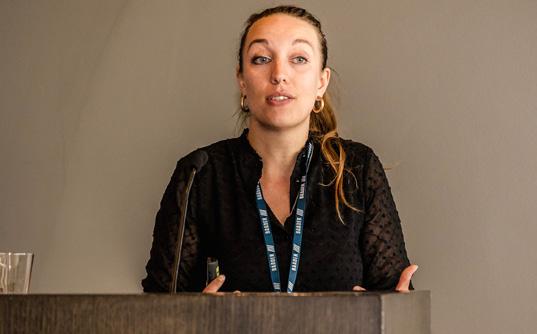



Fee Includes
• Conference attendance 19-20 September 2024
• Full documentation in electronic format
• Lunch and refreshments on conference days
• Free time at Icelandic Fisheries Exhibition
Booking Online https://www.worldfishing.net// FWPBOOK or complete and fax the booking form below to +44 1329 550192. On receipt of your registration, you will be sent confirmation of your delegate place.
For further information on exhibiting, sponsoring, or attending the conference, contact the Events team on: +44 1329 825335 or info@icefishconference.com
Location
Grand Hotel, Reykjavik on 9-10 June 2022
Visit https://www.worldfishing.net//FWPBOOK to register
Please tick all that apply:
(Please copy this form for additional delegates)
Please register me for the Fish Waste for Profit Conference 2024
Time at Icelandic Fisheries Exhibition - No additional cost
Members of supporting associations will receive a 10% discount I am a member of
Family Name............................................................................................................. Country ....................................................................................................................
First Name Telephone
Title Mr/Mrs/Ms/Dr/Other Fax
Company Email
Job Title Signature
Company Address
Company VAT No.
HOW TO PAY *UK registered companies will be charged the std rate UK VAT, Icelandic Companies will be charged std Icelandic VAT
Bank Transfer: Mercator Media Ltd, HSBC Bank plc, GBP account, Sort Code: 40-21-03, Account number: 91894919
SWIFT/BIC8: HBUKGB4B BRANCH BIC11: HBUKGB4131C, IBAN: GB61 HBUK 4021 0391 8949 19
Bank Transfer: Mercator Media Ltd, HSBC Bank plc, EUR account, Sort Code: 40-12-76, Account number: 70235247
SWIFT/BIC8: HBUKGB4B BRANCH BIC11: HBUKGB41CM1 IBAN: GB35HBUK40127670235247
Bank Transfer: Mercator Media Ltd, ISK account, Landsbankinn, Personal ID (Kt.): 560307-9770, Account number: 0115-26-060307 (N.B This payment option is for Icelandic companies paying in ISK only) Standard Rate Icelandic VAT applies
NB: Prepayment is required in full for entry to the conference. Please fax form. Do not send by email as we Cancellations are not permitted, however substitutions are allowed. cannot guarantee the security of card information.
Credit/Debit Card: Complete the form with your card details
I have paid by bank transfer
Please charge my card (delete as appropriate) Mastercard/Visa/Amex Card Number Expiry Date
We look forward to welcoming you in September
The Icelandic Fisheries. Seafood & Aqua Exhibition hosts the latest developments from the industry showcasing new and innovative products and services, covering every aspect of the commercial fishing industry from catching and locating to processing and packaging, right through to marketing and distribution of the final product.





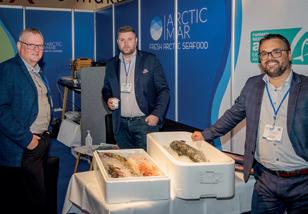
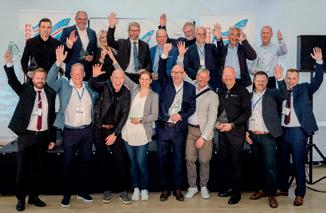
For more information about exhibiting, visiting or sponsoring, contact the events team
Visit: Icefish.is
Contact: +44 1329 825 335 or Email: info@icefish.is
A collaborative project between a group of partners to recycle nylon fishing and aquaculture gear could become an industry turning point, depending on the outcome of full-scale trials now in progress

Recycled fishing gear is not new, and a number of companies around the world are working with fishing and aquaculture gear to turn it into something useful instead of it becoming landfill – but there are a number of challenges associated with this, not least that there’s only so many times that the shredded material can be recycled, losing some of its strength and other qualities with each successive generation.
The Circular Fish Farming Nets (CFFN) project aims to recycle nylon using a different approach, which is predicted to maintain all of the strength and other qualities of virgin material – and it’s nominated for the Aquaculture Awards 2024.
The CFFN project is an exciting opportunity for Hampidjan Group to offer its customers a circular product with a major savings in carbon
Hampidjan ‘‘
The key to this recycling method that the CFFN project is exploring is the depolymerisation of end-oflife nylon, which has already been practiced for years by Aquafil, one of the project partners. This chemical process disassembles the polyamide back into a base oil that can be used to create new PA6 polymers.
Financed by the Norwegian Retailers Recycling Fund, the CFFN is a collaboration between Hampidjan Group, Nofir, Aquafil, Akva Group and Grieg Seafood and the aim is 100% recycled nylon as a one-to-one replacement for virgin nylon. Now about to enter testing at full scale for a normal cycle of usage, this has far-reaching implications for the fishing gear and aquaculture equipment sectors.
“This process creates a new feedstock for fibre production that is now being utilised for the first time in the production of fibres in the quality and strength that the aquaculture industry requires,” a Hampiðjan representative said, commenting that nylon is used heavily in aquaculture installations, purse seine fishing gears and heavy-duty codends for a variety of trawl gears.
Using this process has the potential to be transformative for the future sustainability of the aquaculture and fishing sector, and presents for the first time alternatives to disposal or processing via mechanical recycling.
“The CFFN project is an exciting opportunity for Hampidjan Group to offer its customers a circular product with a major savings in carbon emissions through the entire value chain of nylon. It will also be a guideline for what is possible in this sector through co-operation across the industry,” Hampiðjan states.
“Hampidjan Group will, in close cooperation with its subsidiaries Hampidjan Baltic, Vónin, and Mørenot, produce one full-sized aquaculture cage and as will Akva Group. Fibres and netting will be vigorously tested to demonstrate the ability of the recycled material to match the performance of ‘virgin’ nylon. The full cages will then be used at Grieg Seafood sites for a full normal cycle.”
Representatives of the companies participating in the CFFN project
The decision by David Lovie to rig his new trawler with a pair of Vónin’s Storm trawl doors when he took delivery of the 34-metre Endeavour V owed a lot to his uncle Mark Lovie’s success with these doors on Venture
That was back in 2020, and now Endeavour V is on its second set of 4.5-square-metre Storm trawl doors that have now been in use for more a while and show no signs of being near replacement yet.
“The Storm doors have proven to be powerful, highly durable and robust,” David Lovie said of the original set of doors that Endeavour V started out with. “Unlike our previous doors that required replacement every 12 months, we were able to use these for a remarkable 31 months before considering a replacement. In fact, the first minor maintenance we performed was after a substantial 24 months of use.”
His faith in Vónin has been taken a step further, and last year he went to the flume tank in Hirtshals to observe a variety of fishing gears – and immediately liked the look of the Zenith groundfish trawl. The outcome was an order a Zenith 572 trawl, which has met all of his expectations.
“The Zenith trawl and the Storm doors are a perfect match,” he said, commenting that the Zenith trawl meets the main requirement, as it fishes well, with excellent spread and headline height of eight metres, and it doesn’t do any harm that it’s light to tow.
This is a legacy of Vónin’s Fortis netting, formulated for a combination of high strength and stiffness, which provides the company’s designers with new options to scale down twine sizes in fishing gears, and took full advantage of the possibilities offered by Fortis netting as a starting point in

the Zenith design.
Although the Zenith design has fewer meshes in the fishing circle than comparable trawl gears, by optimising cutting rates and hanging ratios, Vónin’s designers have been able to produce a compact trawl that outstrips other gears in terms of headline height and horizontal spread, while maintaining steady ground contact.
“Everything Vónin has promised has met David’s expectations and when a client returns, it’s clear evidence that they’re happy with our gear,” said Vónin’s Jan Klein.
Thyborøn Trawldoor’s Icelandic agent Hampiðjan Ísland has confirmed an order for a pair of fully controllable doors for fishing company Gjögur, which operates pelagic vessel Hákon ThH-250
Gjögur’s new Hákon is under construction in Denmark and is due to be delivered in mid-2024, and will start fishing with a pair of 12 square metre, 4,700kg Type 42 doors. These are the first fully controllable pair of doors to be supplied to an Icelandic fishing vessel by Thyborøn, which has since 2017 been producing doors with foils that can be adjusted between tows using a hydraulic jack.
The arrival of Type 32, and more recently the Type 42 Bluestream doors, has introduced upgraded technology, including lithium batteries, servomotor control and a pair of transducers installed on the catching vessel’s hull. All this makes it possible to make the trawl doors fully controllable from the wheelhouse during fishing operations.
All of the hardware fitted to the trawl doors, as well as the software for the wheelhouse, has been developed by Thyborøn, with the exception of the batteries. These are lithium batteries with an endurance of up to 40 hours, even with the doors in constant use, before needing to be recharged.
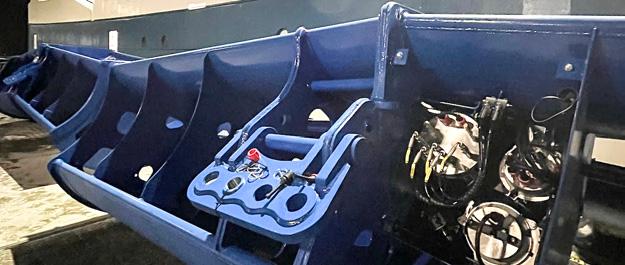
Charging for two hours is enough to bring the batteries up to an 80% charge, and the full 100% charge takes roughly three hours.
The control system as a whole can be re-used when the doors come to be replaced. Today there are 12 fishing vessels using Thyborøn’s Type 32 doors and three fishing with Type 42 Bluestream doors, plus four more pairs are in production.

•
•
•

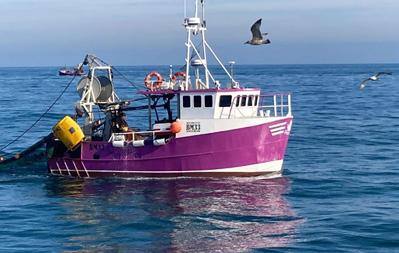
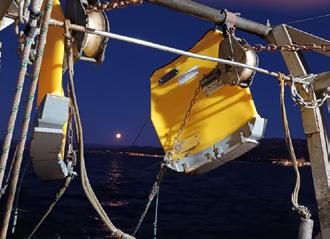



Shetland Fish Producers’ Organisation has bought a pair of the CatchCam gear-mounted cameras developed by SafetNet Technologies for use by member vessels, and these have already provided positive results
The CatchCams are rigged to the trawl gear, allowing recorded footage to be retrieved and when the gear is hauled, and for skippers to then make alterations to improve efficiency and to filter out by-catch, as well as reducing drag to minimise fuel consumption.
“Using the CatchCam meant you could see if your net was properly on the bottom, if the hoppers were hard down or bouncing along. If your net is light on the bottom, you are not going to be catching species like monkfish, and you are just wasting fuel. We were able to make adjustments to correct this,” reported Ellis Fullerton, skipper of Angelina LK-377.
‘‘
It’s great that the PO has invested in these, giving everybody in the fleet a chance to make their fishing more efficientemissions through the entire value chain of nylon
Ellis Fullerton, Angelina LK-377
“For me the best thing about using it was peace of mind. It answered a lot of questions that I have had for many years of fishing. There is nothing like seeing what goes on with your own eyes via the camera. It’s great that the PO has invested in these, giving everybody in the fleet a chance to make their fishing more efficient. It’s much needed as fuel is so expensive.”

Ian Shearer, who skippers Courageous LK-470, said that after some trial and error, he and his crew were able to make some alterations to their towing to improve their technique.
“We found them really good, easy to use, and would certainly like to have another go again in the future,” he said.
“Our fishing crews in Shetland are committed to sustainable and efficient fishing methods, and our investment in this technology will support them in understanding and adapting their fishing gear with even greater confidence than was previously possible,” SFPO chief executive Brian Isbister commented.
“Early uptake from our member vessels has been encouraging, and we’re confident that these CatchCams units will be an excellent tool in continuing to work towards the long-term aspirations that we in Shetland have for our fisheries, and our community.”
Shark monitoring and safety onboard among the potential new uses of recovered buoys.
Spanish technology company Satlink has launched the first programme for the reuse of smart buoys for tropical tuna fishing in the Atlantic Ocean with NGO Project Biodiversity of Cape Verde. The collaboration between the two entities is part of Project ReCon, the international initiative founded by the Spanish company and the Australian NGO Tangaroa Blue Foundation.
Dedicated to the conservation of marine ecosystems and the protection of protected species and habitats, Project Biodiversity joins the project with the aim of reconditioning these buoys to enhance shark monitoring, signal protected marine areas or promote on-board safety, among other potential uses.
Project ReCon is now present in nine countries and the three main oceans (Pacific, Indian and Atlantic). This project, launched by Satlink in 2022, has set up an international collaboration network between fishing companies around the world and local environmental organisations to recover, recondition and reuse these buoys for scientific and environmental purposes.
In addition to Cape Verde, ReCon in present in Australia, Papua New Guinea, Micronesia, USA (Palmyra), Marshall Islands, Cook Islands, Wallis and Futuna and New Caledonia.
The buoys incorporate echo sounders that detect the abundance of fish under the device, making them ideal for being reused in small-scale scientific studies, as well as marking and monitoring marine debris or preventing natural disasters.
Since starting in Australia with founding
n Rigged to a set of trawl or other fishing gear, the Catch Cam provides footage of the fishing gear in use, enabling crews to make adjustments to improve performance
partner Tangaroa Blue Foundation, Project ReCon has become an important fishing sustainability initiative, with the collaboration of other leading environmental organisations such as The Nature Conservancy (TNC) and The Pacific Community (SPC).
More than 100 vessels from 22 companies and organisations, such as Albacora, Echebastar, Inpesca, OPAGAC/AGAC, Sapmer, Bolton Food Group, Cape Fisheries, Caroline Fisheries Corporation, Trimarine, Oakcity Tuna Fishing Corporation, Hartswater, and US Pacific Tuna Group are participating in the project.
ReCon was recently awarded the Tuna Awards 2023, granted by AnfacoCecopesca and the Spanish Ministry of Agriculture, Fisheries and Food for its pioneering nature and its contribution to the fishing industry.
New innovations can steer fish farms towards more sustainable disease prevention, writes Bonnie
WaycottAs the fastest-growing food sector today, aquaculture has become a huge industry, with production accounting for over 50% of total global aquaculture and fisheries output. But as farmers densely pack offshore pens, ponds and tanks to meet the demand for aquatic food, contact between the fish increases, leading to increased disease transmission. Some deem these practices unsustainable and suggest they have a wider impact of spreading disease to already-vulnerable fisheries and negatively impacting the environment.
On a global scale, disease in aquaculture results in US$ 6 billion’s worth of losses each year, with significant challenges remaining despite advancements in vaccines and management practices. Meanwhile, the effects of antibiotics on humans and the environment continue to be a serious concern. As part of aquaculture’s growth and efforts to improve disease resistance and sustainable practices, companies and scientists are now proposing alternative concepts to control disease without resorting to chemicals or antibiotics.
In January 2024, scientists at the United States Department of Agriculture (USDA) announced the development of a green antibiotic alternative to treat the pathogen Streptococcus iniae in hybrid striped bass. S. iniae is the causative agent of streptococcosis, a prevalent disease that can bankrupt fish farms and put farmers at risk when handling infected fish.
‘‘
Aquaculture is increasingly seeking sustainable solutions for disease management beyond traditional antibiotics
Professor Daniel Nelson, University of Maryland
According to USDA figures, streptococcosis causes a worldwide economic loss of US$150 million each year.
“Losses from S. iniae specifically related to hybrid striped bass remain unknown, mostly because the species’ market is relatively new in aquaculture,” Professor Daniel Nelson of the Department of Veterinary Medicine at the University of Maryland told WF. “However, two of the largest hybrid striped bass start-ups in the US were permanently closed due to S. iniae outbreaks that occurred from interconnected RAS systems whereby the bacteria spread from tank to tank. As hybrid striped bass farming expands, we will closely monitor the incidence of S. iniae.”
Green alternatives
Together with Professor Nelson, the USDA team developed a novel antimicrobial protein and treatment regimen that

kills Streptococcus bacteria without leaving chemical residues in the environment. Known as ClyX-2, the protein is an endolysin; bacteriophage-derived enzymes that are typically active late in the bacteriophage infection cycle.
They rapidly cleave bonds that are essential for the stability of the bacterial cell wall. When applied directly to susceptible bacteria in a purified form, they can rapidly hydrolyse the bacterial cell wall, resulting in the osmotic lysis and death of the organism. They are not chemicals like antibiotics, Nelson said. Nor do they accumulate, leave behind a residue or enter the environment or food stream. Instead, they are simple proteins that break down into basic amino acids that are re-utilised by cellular pathways. As such, they are classified as a “green” alternative to traditional antibiotics.
“ClyX-2 is an engineered endolysin,” said Nelson. “It’s a chimera, in other words a fusion of two naturally occurring endolysins that we created in the laboratory. We’ve created dozens of such endolysins and ClyX-2 happens to be the best one at lysing S. iniae. Another exciting point about endolysins is that the species of fish you are treating does not matter because the endolysin only kills the Streptococcus bacteria without harming the fish or its natural flora.”
The USDA team administered S. iniae to hybrid striped bass by intraperitoneal injection to establish infections, followed by an intraperitoneal injection of ClyX-2 an hour later. The team found a 95% survival rate for the fish in the treatment groups compared to a 5% survival rate of fish in the untreated control groups. The results showed that the protein was statistically as effective at treating S. iniae as antibiotic treatments like carbenicillin (85% survival).
Although the injections were efficacious, it may not be economically feasible to hand inject each fish, says Nelson.

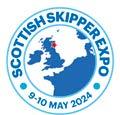










In the future, the team plans to look at treatments of tanks with ClyX-2, specifically a RAS system, to prevent infections from occurring in the first place.
“S. iniae also forms biofilms on water surfaces, including within RAS systems, and these biofilms can seed infections in fish as well as protect the bacteria from traditional antibiotics,” said Nelson. “In our future studies, we will look at the treatment of RAS systems with ClyX-2 to reduce S. iniae biofilms and prevent infection in commercially valuable farmed fish.”
Using control methods such as physical barriers, rather than relying exclusively on chemicals, contributes to better aquaculture practicesMarcos Jofré, Garware Technical Fibres Chile
Skirting the issue
Meanwhile in Chile, net and rope manufacturer Garware Technical Fibres has produced a preventive tool for salmon farms to delay the infestation of the Caligus parasite, one of the most serious parasites affecting salmon health and performance.
Known as the Garware Skirt X12, the new tool is a physical barrier that surrounds the perimeter of a cage’s centre with varied depths. It prevents the entry of the early stages of Caligus, promoting an adequate exchange of water and helping to maximise natural oxygenation.
“Resistance to chemical treatments, concern about the environmental effects of drugs and the search for more sustainable approaches have led to continuous research and development into strategies to control Caligus and other ectoparasites in aquaculture,” said Marcos Jofré, Business Associate at Garware Technical Fibres Chile. “Garware cloths in skirts have been successfully used as a mechanical barrier that delays and reduces sanitary baths in salmon farms worldwide.”
The Garware Skirt X12 is made from a three-dimensional fabric with an opening of 80 to 150 microns for Norway and a second generation of 60 to 100 microns for Chile, where the sea lice are smaller. It has high resistance to abrasion, is easy to install and clean, and is available with V2 technology, which delays biofouling. Keeping the skirt clean through low pressure cleaning in situ is key to preventing any reduction in water exchange between the
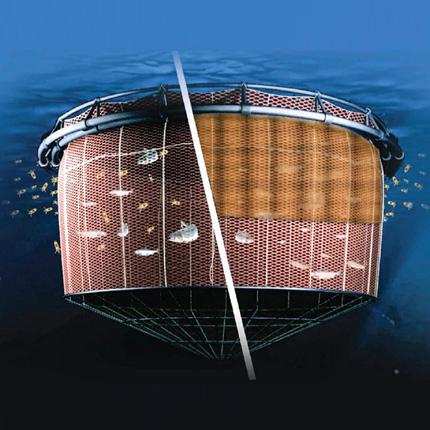
inside and outside of the cage.
“We know that monospecific strategies, based exclusively on chemicals, have shown the generation of long-term resistance,” said Francisco Serra, commercial manager at Garware Technical Fibres Chile. “Reducing chemical use on farms is in itself a desired goal, not only because of cost but also to lengthen the useful life of the chemicals and delay resistance by parasites.”
Tests carried out by the Universidad Austral and Mowi, both in Chile, found that the Garware Skirt X12 blocked 99.6% of Caligus larvae in the Nauplii stage and 99.7% of larvae in the Copepoditos stage.
Best-practice
The heart of Garware’s work is in the construction of technical fibres that support customer needs. The Garware Skirt X12 is no exception, with the fabric designed to withstand the marine environment and offer UV protection.
“Our scope is limited to the production of nets, skirts, ropes and in general textile solutions for the industry,” said Jofré. “Thus, we have created nets with copper inside the fibres, which have proven to be capable of preventing the development of bacteria and viruses on their surface. Some clients have also used our skirts to establish semiclosed cultivation, which partly separates fish from the outside environment.
“Using control methods such as physical barriers, rather than relying exclusively on chemicals, contributes to better aquaculture practices. With the Garware Skirt X12, we are aligned with ongoing global change towards the wellbeing of fish and sustainable aquaculture.”
Innovations such as these are crucial to help protect fish from parasitic diseases and contribute to more sustainable practices.
“Aquaculture is increasingly seeking sustainable solutions for disease management beyond traditional antibiotics,” said Nelson. “In addition to alternative antimicrobial technologies like endolysins, developing vaccines tailored to fish species and diseases is promising, alongside probiotics and prebiotics to bolster fish immunity.
“Optimising nutrition with immune-boosting additives is vital, as is selective breeding for disease resistance using genetic markers. Better environmental management, including hygiene, water quality and waste control, reduces stress and disease risk. Leveraging data analytics can also improve disease monitoring and early detection. Collaboration among researchers, industry, and policymakers is crucial for implementing these strategies and driving sustainable disease management in aquaculture.”
The programme will cover all aspects: technology, regulatory changes and challenges, capitalising on emerging opportunities, future proofing and meeting market needs. Join us in 2024

Session topics & panel discussions will include:
Energising the industry for investment (what do investors want from start-ups)
IPR (Intellectual Property Rights) opportunities/processes/ assistance for start-ups
Future proofing and meeting market and consumer attitudes/needs
Growing emerging opportunities linked closely to partnerships in the circular economy and opportunities that connect land and sea and cross sectorpharmaceuticals, nutraceuticals, feed, pet foods, biofuels, and fertilizers etc
AI, digital technology, and applications in commercial fishing/aquaculture by-product production
The power of partnerships – how teaming up and collaborative relationships can accelerate full utilisation; what are the current available support systems for startups?
Certification, traceability and nutritional value of by-products
Innovation | Industry insight | Knowledge Sharing
For more information: visit: icefishconference.com contact: +44 1329 825335 or email: info@icefishconference.com
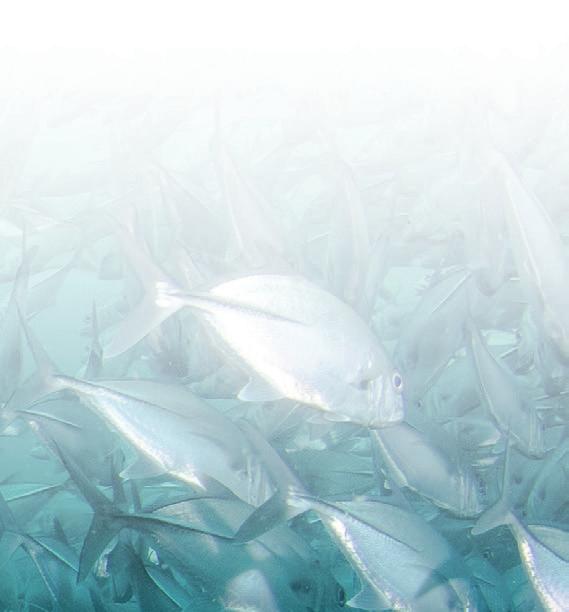
Operated by:
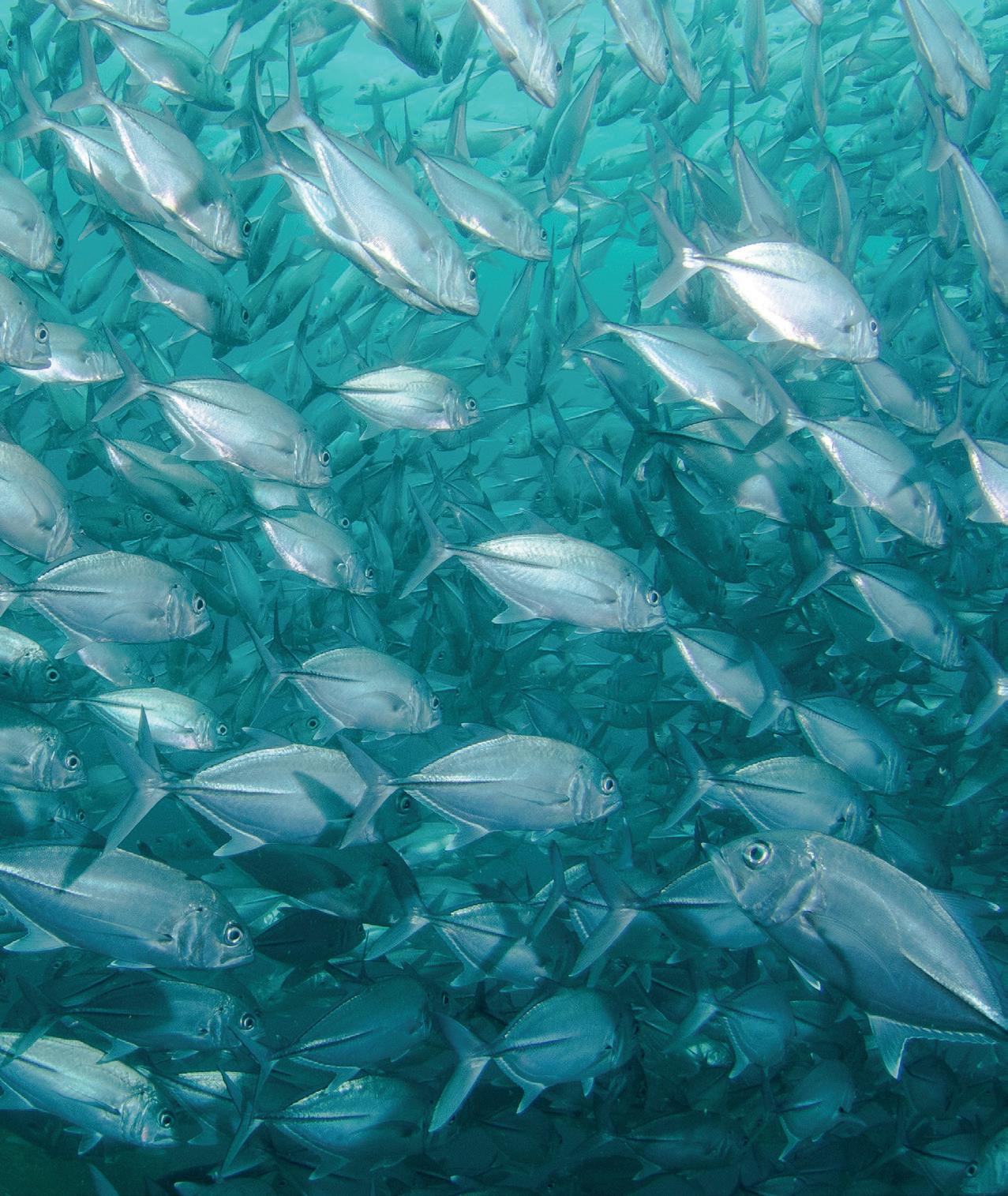
Blue Aqua International, Bahwan Services and Trading LLC and Muscat Investment House are teaming up to develop major aquaculture projects
The partnership aims to support the sustainable growth of the aquaculture industry and address food security concerns globally. It will also look to contribute to the development of the aquaculture industry and supporting economic diversification in the regions.
“This partnership is a significant step towards the development of Oman’s aquaculture sector and underscores the potential of the country to become a major player in the global seafood market,” Blue Aqua International CEO Dr Farshad Shishehchian said. “With our cutting-edge technology and BSTL’s expertise in project management and execution, we are confident that we can create a sustainable and profitable aquaculture project in Oman.”
Multi-phase development
The partnership will develop Oman’s first state-of-theart aqua feed mill with a production capacity upwards of 30,000 tonnes of feed, a high-tech trout farm capable of producing 3,000 tonnes and a super-intensive shrimp
farm using Blue Aqua’s patented Mixotrophic System to produce 1,000 tonnes of shrimp annually.
With this partnership, Blue Aqua International, BSTL and MIH aim to support Oman’s Vision 2040 by creating a worldclass aquaculture project in the country, which will contribute to the economic diversification and growth of Oman while also addressing the increasing demand for sustainable seafood products globally.

n Singapore’s first high-tech trout farm is expected to produce upward of 3,000 tonnes annually in a space of 1.6 hectares using super-intensive technology
In addition to Bahwan Service & Trading LLC’s stake in Blue Aqua Singapore Pte Ltd, MIH in the same entity established under Blue Aqua International.


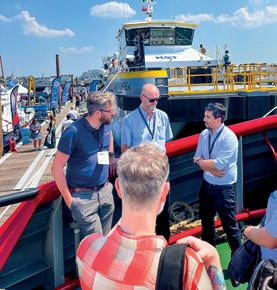





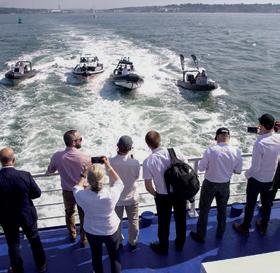

Seawork celebrates its 25th anniversary in 2024!
The 25th edition of Europe’s largest commercial marine and workboat exhibition, is a proven platform to build business networks.
Seawork delivers an international audience of visitors supported by our trusted partners. Seawork is the meeting place for the commercial marine and workboat sector. For more information visit: seawork.com contact: +44 1329 825 335 or email: info@seawork.com
#SeaworkDiscover 12,000m2 of undercover halls that feature over 400 exhibitors with more than 70 vessels, floating plant and equipment on the quayside and pontoons.
Experience Speed@Seawork on Monday 10 June in Cowes - a sector specific event for fast vessels operating at high speed for security interventions and Search & Rescue.
Celebrate innovation and excellence in the commercial marine industry at The European Commercial Marine Awards (ECMAs) on Tuesday 11 June.
Learn from the industry experts through the Conference programme, that helps visitors to keep up to date with the latest challenges and emerging opportunities.
Opportunities to expand the maritime skills base at the Careers & Training Day on Thursday 13 June 2024 that delivers a programme focused on careers in the commercial marine industry.
There’s been a marked increase in blue economy financing in recent years, according to the new EU BlueInvest Investor Report 2024, with its findings showing that an investment ecosystem to support innovation is taking shape
The BlueInvest initiative has been a driving force behind these changes that span fisheries, aquaculture, coastal tourism, shipping and ports, offshore renewable energy and biotechnology, said the European Commission.
Blue renewable energy, blue tech and ocean observation and aquaculture have been the three most dynamic sectors, advises the report. At the other end of the spectrum, sustainable coastal and maritime tourism as well as environmental protection and regeneration have closed fewer deals.
With regards to aquaculture, it states the sector generates a relatively high number of deals and receives more growth-stage investments aligned with the recognised growth potential of SMEs in this high-profile sector. It also gathers the second highest number of investors.
Due to its strong potential, the sector is seeing an encouraging influx of young companies
“Due to its strong potential, the sector is seeing an encouraging influx of young companies, which is reflected in the growing share of early-stage financing,” it said. However, purely fisheries-related deals with a sustainable dimension are relatively scarce (about 60 out of about 430 deals), which the report says may reflect “a weak innovation dynamic and lower investor interest” compared to aquaculture.
It notes that over the past 20 years, the vast majority of deals in aquaculture and fisheries (combined) occurred in the EU (72.7%), in line with the other sectors, while 27.3% of deals were closed in non-EU countries, mostly in Norway, followed by the UK.
Norway’s strong aquaculture and fishery ecosystem explains why this country represents 20% of deal activity on its own over the past five years, it said.
Meanwhile, the majority of EU deals since 2018 have been concentrated in the four countries of Denmark, France, Spain and the Netherlands, all of which have a strong historical presence in the sector. Overall, the EU remains the 5th largest fisheries and aquaculture producer worldwide, accounting for 3% of global production, from which 22% comes from aquaculture. By comparison, China is ranked first with a share of 39%.
Over the last 20 years, disclosed investments in the aquaculture sector have reached €1.5 billion, representing

10% of capital deployed in the blue economy.
Overall, the report finds the volume of disclosed investments in the blue economy is three times larger than it was 10 years ago, reaching more than €13 billion over the five-year period between 2018 to 2023.
Since 2018, about 270 deals have been closed every year in the blue economy, with the report ascertaining that at least 30 private equity/venture capital funds are focused on blue economy deals, and the number is growing. Furthermore, some 75% of European blue economy deals occur within the EU, with half of the investors coming from non-EU countries, with the report determining that this shows EU companies are creating substantial business opportunities that attract investors from other regions.
In terms of the number of deals, mergers and acquisitions represent about 38%, followed by earlystage equity investments (34%), ahead of growth-equity investments (11%), and grants (7%).
This suggests a limited average level of maturity of the blue economy sector overall, particularly given the relatively modest amounts being invested into growthstage companies, advises the report.
The EU’s blue economy generated a total turnover of €523 billion in 2020. It provides at least 4.5 million direct jobs and countless more indirect and sub-contracted forms of employment, many in regions where there are few alternatives.
Despite some progress, the Central Asian country has fallen well short of its ambitious production targets, and while government has pledged more support to get the industry on track, state policy remains inconsistent and resources are limited, writes Vladislav Vorotnikov

The industry’s production performance has doubled since the Kazakh government embarked on a journey to expand the country’s aquaculture in 2020. In 2022, farmers manufactured 13,200 tonnes of fish and seafood – the highest figure in its post-Soviet history. But while these are positive developments, a number of complicated underlying issues remain.
Under the state development plan, Kazakh aquaculture production is aiming to reach 270,000 tonnes per year by 2030. In addition, to this, Kazakhstan is looking to become a net exporter of fish, with the plan to deliver some 300,000 tonnes of products to neighbouring country markets, and for aquaculture to account for the lion’s share of that volume.
There are fears that it will be difficult to achieve the planned indicators due to worsening water availability
Nurzhan Zhumagaliuly, Association of Fisheries ‘‘
However, when the programme was made public, local players said the goals were “unrealistic”. They cited numerous systemic problems, like a lack of necessary infrastructure, low per capita fish consumption, and the administrative barriers that have been discouraging potential investors.
The government’s production plan envisaged 2022’s output near quadrupling to reach 22,700 tonnes, and to achieve this, in recent years, numerous ponds and lakes across the country have been re-registered to run aquaculture farms instead of commercial fishing. This, observers, have noted has only resulted in the volumes being shifted from one fish industry segment to another.
Under the existing rules, the registration of a water body as an area of commercial fishing restricts its production potential, explained Anastasia Markova, an analyst with local publication Kursiv. She told WF that enterprises are only allowed to catch 30% of fish in the water body, even if they have stocked it by 100%.
The transition untied farmers’ hands, helping them to scale up operations and this has brought much of the recent growth, Markova said, but added that beyond this, the industry has made little progress.
Similarly, she said the expanding state aid is yet to make a difference, and amid the economic and regulatory challenges, farmers continue to find it difficult to make ends meet.
In 2023, Kazakh government allocated 4.1 billion tenge (US$ 9.1 million) to support aquaculture. This was nearly four times more than the funding given in the previous year, outlined Nariman Zhunusov, Chairman of the Fisheries Committee of the Ministry of Agriculture, during a recent government meeting.
n According to the report, aquaculture generates a high number of deals and receives more growth-stage investments

This money has been spent on partial reimbursement of capital investments and operational costs, including those related to the purchase of fish feed, broodstock and veterinary medicines. However, many farmers continue to complain that the system doesn’t work.
Marlen Tursinari, a farmer running two farms in the Almaty region in the southeast of Kazakhstan, invested 120 million tenge ($270,000) in business expansion in 2023, counting for the promised generous state aid. But Tursinari advised that the aid has not been exactly what he expected so far.
“We grow fish, often without the necessary subsidies. Due to a lack of working capital, we experience difficulties with logistics and delivering fish to final customers,” Tursinari said. He also said the company’s own reserve funds have been the only thing to keep it afloat.
The story is similar for most Kazakh farmers. Valentin Ishchenko, from the Kostanai region in the central part of the country, also launched a farm, expecting to take advantage of the state aid. However, when the facility was up and running, the rules were adjusted, and only large farms with a capacity of at least 40 tonnes of output per year became eligible for subsidies.
Such a move is killing the Kazakh fish industry’s development opportunities, say farmers.
Unfortunately, the challenges they face don’t end there. Sergei Ponomarev, head of the working group on aquaculture development in the national parliament, Majilis, said they also suffer from a lack of domestic fish feed capacities.
Also, Danish and Polish companies had expressed an interest in building a fish feed factory in Kazakhstan, but the parties have failed to get the ball rolling.
“A paramount condition for the feed mill’s construction is the demand on the domestic market of at least 10,000 tonnes. The actual demand is only 3,000 tonnes per year,” Ponomarev said.
Looking ahead, many Kazakh fish farmers have set their hopes on a new aquaculture bill, a concrete regulation that follows on from discussions that began in 2022.
In March 2024, a group of Kazakh lawmakers announced the bill was almost ready and should become a gamechanger for the industry. It is expected to make access to state aid as easy as possible and set transparent and adequate rules for fish farms’ operations. However, there’s still no definite information on when the bill will finally enter into law.
Meanwhile, aquaculture needs something more than loud statements for Kazakh production to take off, said Nurzhan Zhumagaliuly, a spokesperson for the Association of Fisheries.
Zhumagaliuly said that setting an ambitious production target ahead of designing a development plan was wrong. “We must first improve the relevant infrastructure, set up conditions appropriate to growth fish, improve the legislative framework, and only then declare such figures,” he said.
Natural constraints
Regrettably, there are other important factors that could

prevent Kazakhstan aquaculture from reaching its 2030/270,000 tonnes per year target. Among these, is water scarcity. The country is water-dependent, with only 2.8% of its territory covered with water, and arid zones representing two-thirds. Indeed, it is already beginning to experience water shortages, and a deficit of up to 75 million cubic metres per year is predicted by 2030.
Zhumagaliuly said the authorities’ production target looks particularly unreachable given the worsening ecological situation.
“A more realistic figure is 60,000 tonnes [of aquacultural production] by 2030. There are fears that it will be difficult to achieve the planned indicators due to worsening water availability and water shortages, as well as high inflation, and logistics chain disruptions,” he warned.
In the face of looming water scarcity, fish farmers have often been locked in fierce tussles with local livestock manufacturers who demand unlimited access to fresh water.
Adilzhan Rakhyshev, head of the fisheries sector at the Council of the Agro-Industrial Complex of the Chamber of Entrepreneurs, confirmed that fish farmers frequently enter into fights with locals and rural authorities over access to fresh water. Unauthorised grazing and watering agricultural animals are a common challenge –jeopardising fish farmers’ investments, he explained.
Furthermore, in the face of climate change, some water bodies that authorities deemed acceptable for aquaculture when the programme was rolled out won’t be so in 2030.
Erlan Mukanov, director of the Association of Fisheries of the Akmola Region, for example, noted that many ponds in the region have a depth of only 1.5 metres.
“We have hot summers and cold winters. In summer,
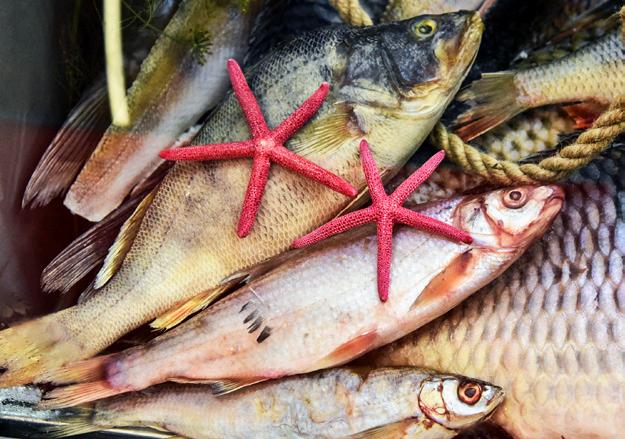
shallow waters largely dry out, and in winter, the water freezes to a depth of up to one metre. In such conditions, native fish survive, but it is extremely difficult to keep commercial aquaculture running,” he said.
n Kazakhstan’s low fish consumption is also hindering the aquaculture industry’s development
Our service – your peace of mind
Mukanov suggested ponds and lakes could be deepened, making them more suitable for commercial fish farming. But he also conceded that this is a tall order requiring substantial investments, and that businesses are unable to bear the costs without help from the state. A warm - and chilled - welcome to Our booth C 1
We provide cooling, icing, freezing, thawing and heating solutions to the seafood, marine, industrial and commercial markets as well as climate solutions for public and private buildings and infrastructure including retail. We offer a competent support and service network throughout the north east of Scotland

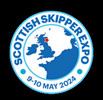
Scottish Skipper Expo in Aberdeen 9th and 10th of May 2024
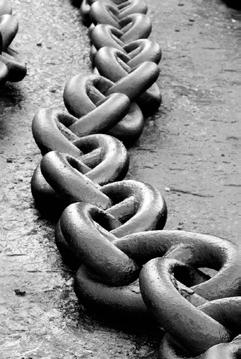
Aquaculture Nets/Cages
The net for technology-driven fish farming
KikkoNet is made of UV stabilised, extremely strong and lightweight Polyethylene Terephthalate (PET) monofilaments, woven into a double twisted hexagonal mesh.
Mayank Batra and Marco Montagnoli Tel: 0060 126 883 709 info@kikkonet.com Contact us at: (+47) 56 32 68 50 sales@sotra.net
www.kikkonet.com


Beck Pack Systems A/S DK-3700, Roenne, Denmark Tel: +45 56 95 25 22 info@beck-liner com
Beck Pack Systems, Inc. Seattle, WA, USA Tel: +1 425 222 9515

ISO-9001, ISO-22000, FSSC 22000 cer ti ed manufacturer and supplier of block liners, folding car tons, and freezer frames for the international food processing industr y To nd the agent in your region visit: www.beck-liner.com




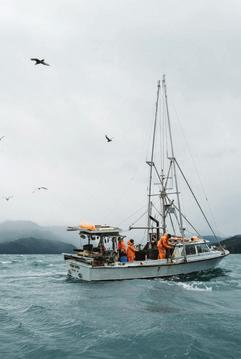
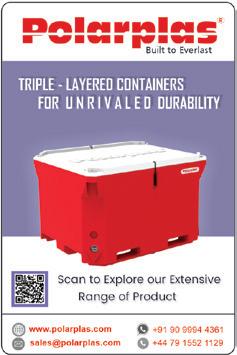




























Skovdalvej 30, 8300 Odder, Denmark
Tel: +45 86784099
Fax: +45 86784060
Email cartolit@cartolit.dk
Website www.cartolit.dk



A Poutada
Riveira – A Coruña – Spain
Tel.: +34 981 87 60 08
Tel.: +34 686 930 025
Fax: +34 981 87 43 48
Email: correo@apoutada.com Website: www.apoutada.com
Manufacturer of fishing hooks since 1985. Steels and internationally proven designs and best warranty.
Specialized supplier of a wide range of material for longline fleet.

ASANO is a supplier and manufacturer of high-quality stainless steel fishing gears sales@asano-global.com https://asano-global.com/
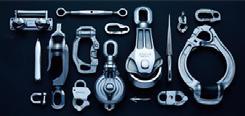
ALL STAINLESS STEEL PRODUCTS DESIGNED IN JAPAN





SICOR INTERNATIONAL LIMITED
Gore Cross Business Park Bridport Dorset DT6 3UX
Tel: 01308 428 224
Fax: 01308 428 228
Email: sales@sicor-int.com
Website: www.sicor-int.com
Contact: Toby Eeles
SICOR INTERNATIONAL LIMITED Unit 3
Murcar Trading Estate, Denmore Road, Bridge of Don Aberdeen, Scotland, United Kingdom
Tel: 01224 707560
Fax: 01224 707561
Email: aberdeen@sicor-int.com
Contact: Gary Mitchell
Manufacturers of all types of fishing ropes, netting and twines including poly steel ropes and compact netting.




1-2 Shing Nung Road, Tungkang, Pingtung,Taiwan
Tel: 886-8-8331100~9
Fax: 886-8-8327022
E-mail: export@chingfa.com.tw Website: www.chingfa.com.tw
Specialized manufacturer & exporter of: Hi-tech 7 tuna purse seine nets, Super 20 aquaculture knotless nets (Raschel type), nylon longline & its spare parts, nylon fishing line, nylon mono & multi-mono nets, nylon twisted and braided nets, PE trawl nets, ropes, twines, floats and etc.
Rua da Cerfil (Cap. Gramaxo) P.O. Box 1029, 4471-909 Maia PORTUGAL
Tel: +351 22 961 9200
Fax: +351 22 960 5757
Email: sales@lankhorsteuronete.com www.euronete.com
Contact: Mafalda Gramaxo
Salvador Castro
Producer of the recognized brands: Netting: Euroline®, Eurocross®, Premium®, Premium Plus, Lankoforce® Wire Ropes: Eurowire® and Europact® Fibre Ropes: Lankoforce®, Eurosteel®, Tipto® Super 12 net twines. Recently Launched! Euroline Tipto® / Eurostone® TRUSTED BY THOSE FEEDING THE WORLD!

VMK pelagic processing solutons combines high performance machines with small square meter usage and cost e.cient maintenance.
VMK pelagic processing solutions combines high performance machines with small square usage and cost efficient maintenance.
Fornandergatan 1,
392 33 Kalmar, SWEDEN +46 (0) 480 945 00 vmk@arenco.com
Fornandergatan 1, 392 33 Kalmar, SWEDEN +46 (0) 480 945 12 vmk@arenco.com www.vmkfish.com



Supplying the fish and seafood industry for decades Cabinplant’s solutions for the fish and seafood industry include solutions for reception of raw material, sorting, grading, cleaning, filleting, cooking, cooling, weighing and packing.
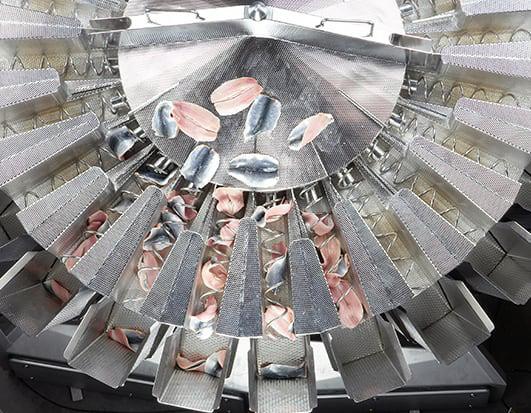


Cochin Food Tech Pvt Ltd (India) sales@cftech.in www.cftech.in
Processing Machines - FPM - for smaller fish
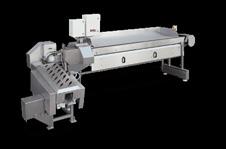

SEAC FPM-400 Nobbing and Filleting machine
SEAC AB Industrigatan 8 386 32 ISLAND OF ÖLAND SWEDEN +4648535200 +46704391454 info@seac.se
Langerbruggekaai 15
9000 • Gent • Belgium
Tel: +32 9 376 95 95
Fax: +32 9 376 95 96
info@cretel.com www.cretel.com
Cretel is manufacturing in Belgium
FISH SKINNERS
FISH SCALERS
VACUUM PACKAGING MACHINES
INDUSTRIAL WASHING AND DRYING EQUIPMENT
Consult us and take advantage of our worldwide experience and expertise.

RÆVEVEJ 22 - DK-7800 SKIVE
Phone: +45 9752 2099
Fax: +45 9752 0572
Web: www.kroma.dk
E-mail: kroma@kroma.dk
Kroma A/S is a supplier of high quality de-scaling, gutting and filleting machines for all kind of fish species. Specialist in handling of roe, and filleting of soft fish species like mackerel.

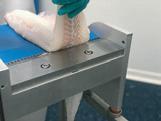











Trusted solutions for 40 years
Advanced raw material usage






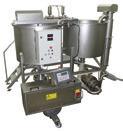

Increases yield natural way
Low pressure injection
Adjustable injection levels
Packing yield increase
Increases yield natural way
Protein in Protein
Reduced drip
Lower cook and chill loss
No chemicals
Sale: +354 516 3000 traust@traust.is www.traust.is
At Brimmond we specialise in mechanical, hydraulic or electrical solutions. Our highly qualified engineers can design, manufacture, service and repair a vast range of equipment to meet any client’s needs.
■ Brimmond Tofthill Avenue, Midmill Business Park, Kintore, Aberdeenshire, AB51 0QP Tel: +44 1467 633 805
SINCE 1952 & AQUACULTURE
To advertise in the World Fishing Directory contact Hannah Bolland on +44 1329 825335

IRAS A/S Gammelby Mollevej 3 DK-6700 Esbjerg, Denmark Tel: +45 7611 4949
Email: iras@iras.dkWeb: www.iras.dk
IRAS is supplying the modern fishing and aquaculture industry with innovative solutions within: Pumping, Classification, Weighing, Ice handling, Storage, Transport and Distribution systems. IRAS offers single products or complete systems for raw material handling.
Based on decades of experience, IRAS KNOW HOW to handle fish

World’s leading supplier of Fishing nets (our globally trusted brands are SNG, Sapphire and Olivene), assembled trawls, Purse Seines, Aquaculture cages and anti-predator nets for aquaculture industry, ropes for the fishing, aquaculture and shipping industry. Our products are exported to over 60 countries globally.
Garware Technical Fibres Plot No 11, Block D-1, MIDC, Chinchwad, Pune, India Web: www.garwarefibres.com
Tel: (+91)2027990381
Contact: Vivek Kumar Email: vkumar@garwarefibres.com Mobile: +917767802806

+44 (0) 1779 400590 office@ptguk.com www.ptguk.com



ericdu@dnsnetting.com
We are a professional fish net maker and provide assembly & design service for various nets. We use Nylon, HDPE, PP, PE to make purse seine net, fish farming cage net for smolt, grower, growout, predator & anti-bird, trawl net, trap net, safety net, sports net, twine, float and steel wire. The making of fish nets can be twisted, braided, super-knot knotless or raschell knotless, mono or multi-mono filaments.
Website: www.king-net.com.tw Email: sales@mail.king-net.com.tw
Main phone No. +886 7 535 2939 Fax No. +886 7 535 2938
23F-2, No.2 Chung Shang 2nd Road Kaohsiung City, Taiwan , Zip code: #806

1-2 Shing Nung Road, Tungkang, Pingtung,Taiwan Tel: 886-8-8331100 9 Fax: 886-8-8327022
E-mail: export@chingfa.com.tw Website: www.chingfa.com.tw
Specialized manufacturer & exporter of: Hi-tech 7 tuna purse seine nets, Super 20 aquaculture knotless nets (Raschel type), nylon longline & its spare parts, nylon fishing line, nylon mono & multi-mono nets, nylon twisted and braided nets, PE trawl nets, ropes, twines, floats and etc

Fishing nets, aquaculture nets, agriculture nets, sports nets, all types of ropes and twines.



Van Beelen Group bv

Rua do Outeiro, 906, 4470-150 Gemunde I Portugal
Tel: +351 22 943 49 00
Fax: +351 22 943 49 49
Email: salvadorcastro@wireco.com
Contact: Miguel Oliveira Sá / Salvador Castro
Oliveira SÁ manufactures a full range of products for fishing applications: Steel Wire Ropes: Green Strand®, Super Yellow Fin®, Super Atlantic®, Zincal® Compact and several other constructions also with possibility of a plastic core impregnation. Combination Ropes: we produce combination ropes, both in 4 and 6 strands. Synthetic Ropes: Braided/Twisted and Double Braided ropes with recognized brands such as Astra Line®, Libra Line® and X Trema Line®



Thyborøn & Poly-Ice Trawldoors for all kinds of pelagic, semi-pelagic and demersal trawling with single, twin- and multipurpose rigging. All doors are “Made in Denmark” according to customer demands and wishes.
8, Sydhalevej, DK-7680 Thyborøn, Denmark
mail@thyboron-trawldoor.dk www.trawldoor.dk

PEGUET & Cie 12 Rue Des Buchillons 74105 Annemasse, France
Tel: +33 450 95 54 54

Estrada de Fortons 23
36812 Redondela (Pontevedra) Spain
Tel: +34 986 20 33 12
E-mail: info@grupoeurored.com
Website: www.grupoeurored.com
D
IJmuiden, Netherlands
+31(0)255 560 560 info@vanbeelengroup nl vanbeelengroup.nl
P E vb-ropes.com
Carretera de Catral, 30 03360 Callosa de Segura, Alicante, Spain
Tel: 0034 965 310 408 Tel: 0034 965 310 354
Email: redessalinas@redessalinas.com www.redessalinas.com
Contact: Srta. Carmen Salinas
Manufacturer of special purse seining nets for tuna and horse mackerel, also trawl gear, ropes and twines
AS Fiskenett is the only company in Norway to design, manufacture, maintain and repair commercial fishing nets for both offshore and coastal fishing fleets.
Contact Hugo Ulvatn, MD, to learn how we can help you.
Call: +47 48009504
Email: sales@fiskenett.no
Info: www.fiskenett.no




MARKUS LIFENET LTD
Breidvangur 30
IS-220 Hafnarfjordur, Iceland
Tel.Iceland: +354 5651375
Tel. UK: 01525 851234
Email: sales@markusnet.com
Contact: Petur Th. Petursson
We specialise in the development and manufacture of man overboard recovery systems suitable for all types of fishing vessels, such as the Markusnet and the Markus MOB Scramble-net/Cradle.
Fax: +33 450 92 22 06
E-mail: info@peguet.fr
Website: www.peguet.fr
Manufacture of Maillon Rapide® quick links for permanent connection in aeronautics, architecture, rigging equipment, industrial supplies, sailing, parachuting & paragliding, professional fishing, tramways facilities, climbing. All product range self-certified. YOUR PARTNER SINCE1941

Complete range of high efficient trawl doors for demersal fishing, “off the seabed” semi-pelagic fishing and pelagic fishing.
Reykjavík, Iceland atlimarj@polardoors.com www.polardoors.com
Hi tech design and production of pelagic and bottom fishing trawl systems. Nets and deck material for tuna purse seiners, inshore fishing and longliners. Everything necessary for fishing activities:
MORGERE trawl doors, COTESI nets, ropes, mooring, BRIDON cable, flotation, CROSBY GROUP naval hardware, longline material, etc. Aquaculture integral supplies and installation of fish farming and Long Line production systems, OFFSHORE facilities. Eurored Directory.indd 1 30/09/2020 14:32 -we make fishing more profitable

VÓNIN LTD
P.O. Box 19
P.O. Box 19 FO-530 Fuglafjørõur Faroe Islands
FO-530 Fuglafjørður Faroe Islands Tel: +298 474 200 Fax: +298 474 201
E-mail: info@vonin.com Web: www.vonin.com
Tel: +298 474 200 Fax: +298 474 201 Email: info@vonin.com Web: www.vonin.com
Contact: Bogi Non
Contact: Eystein Elttør
Manufacturer of pelagic trawls, semi-pelagic trawls, shrimp trawls, various bottom trawls, purse seine nets, fish farming nets and sorting grids. Vónin is a major supplier to the North Atlantic/Arctic fishing fleet. We have all accessories in stock.
Vónin is a major supplier to the fishing fleet and aquaculture industry with branches in the Faroe Islands, Greenland, Canada, Denmark and Norway. Vónin manufactures pelagic trawls, semi pelagic trawl, shrimp trawls, bottom trawls, sorting grids, crab pots, net cages, mooring systems and net washing systems.



